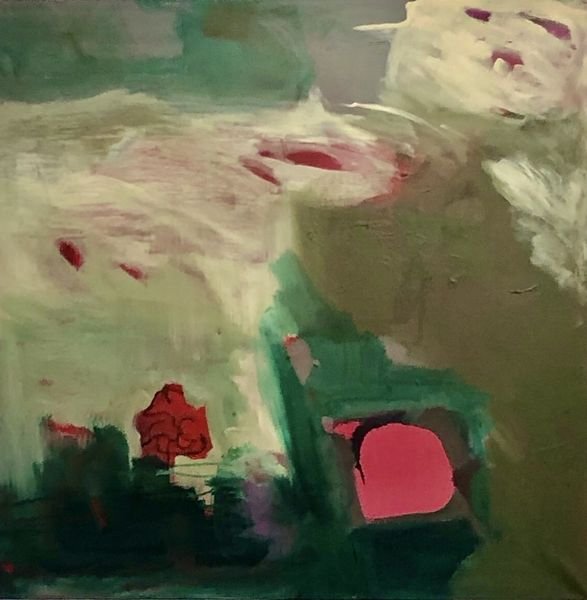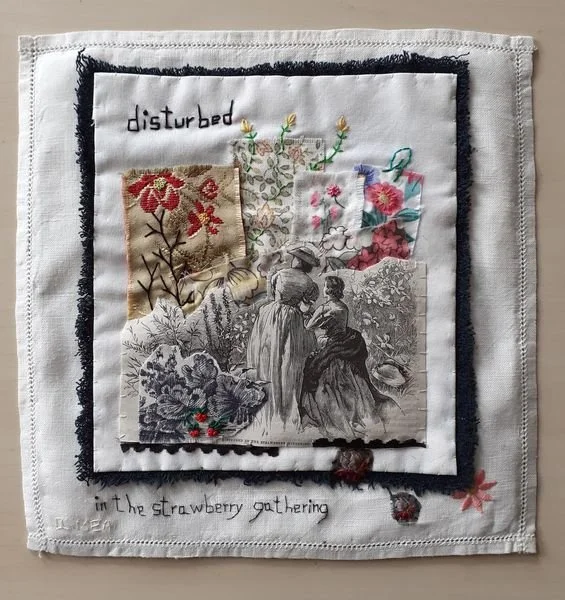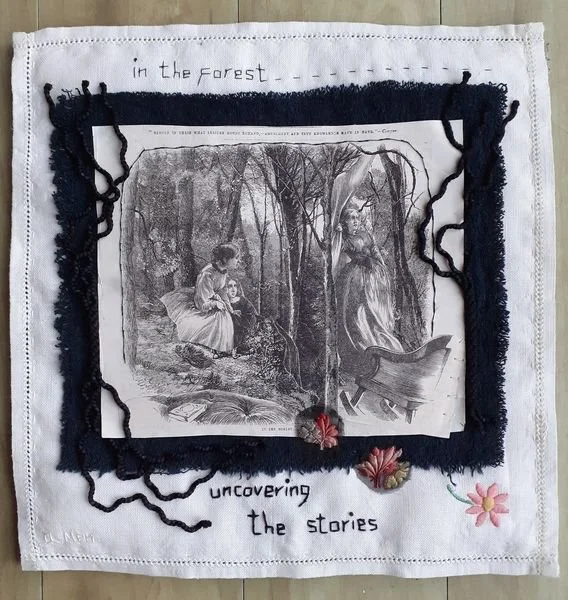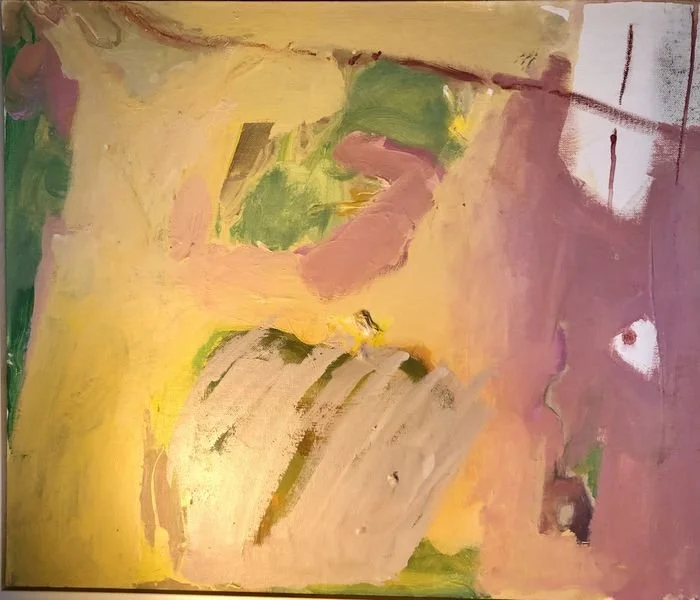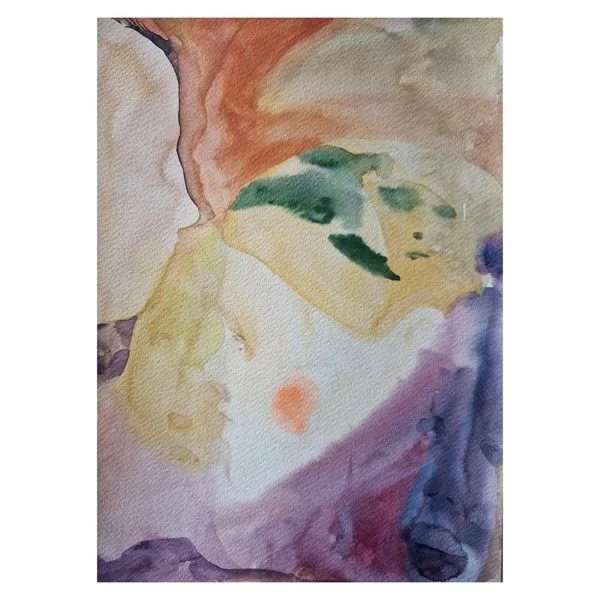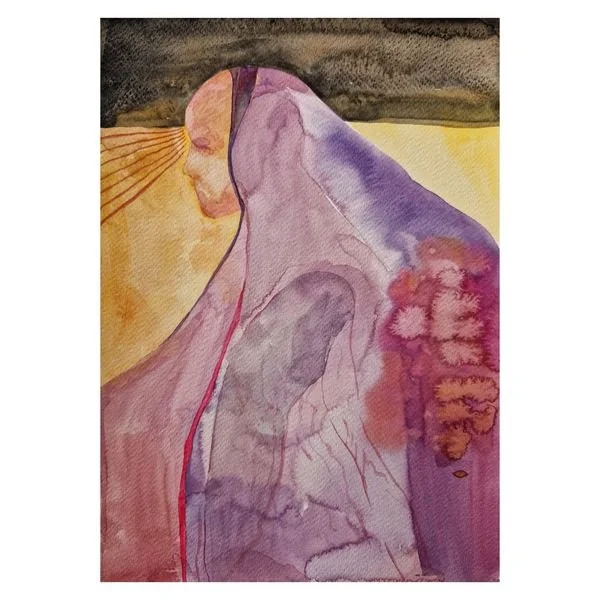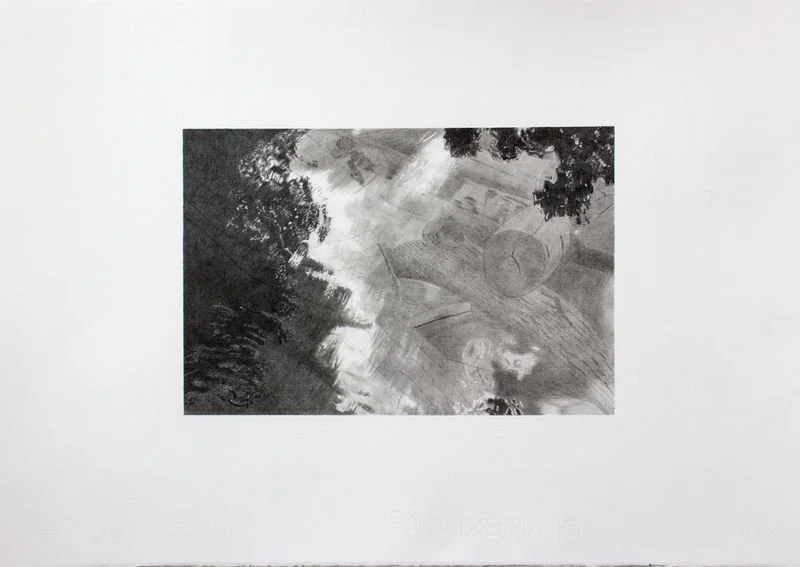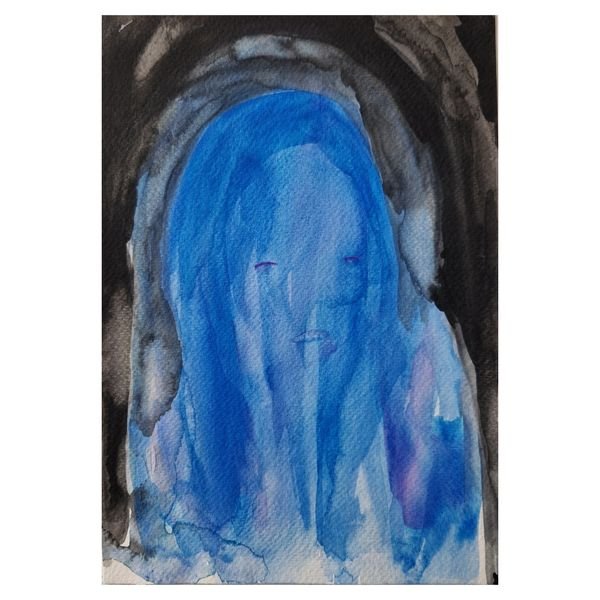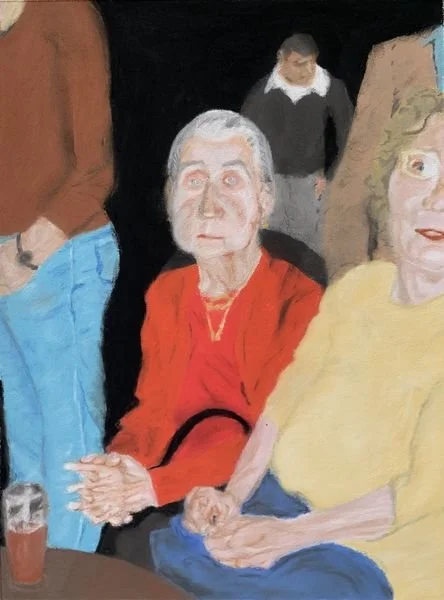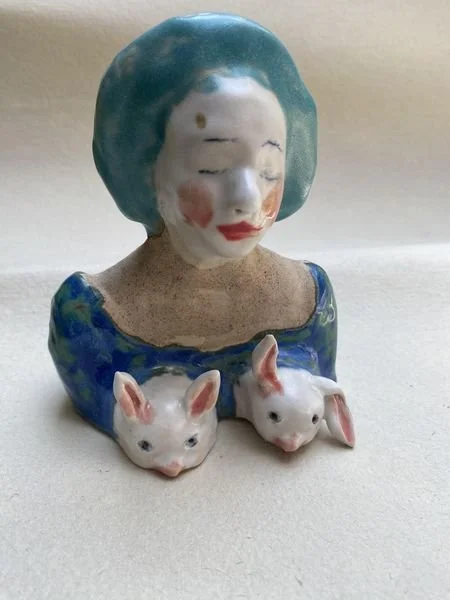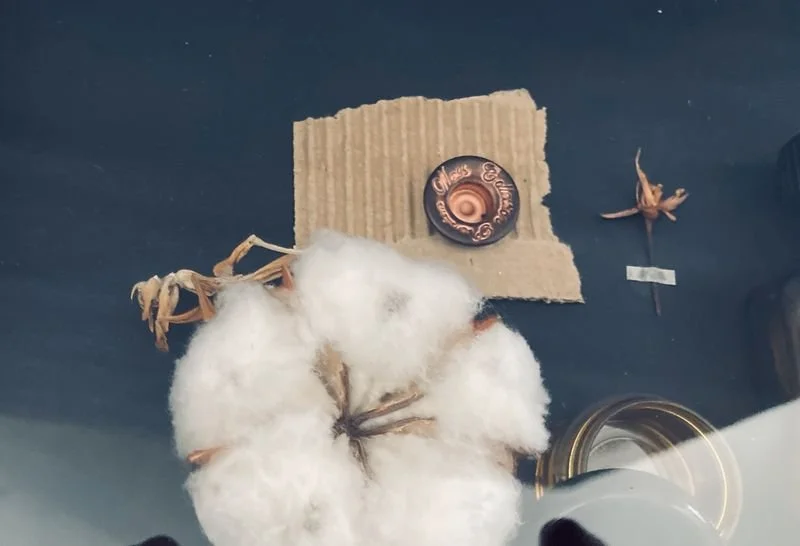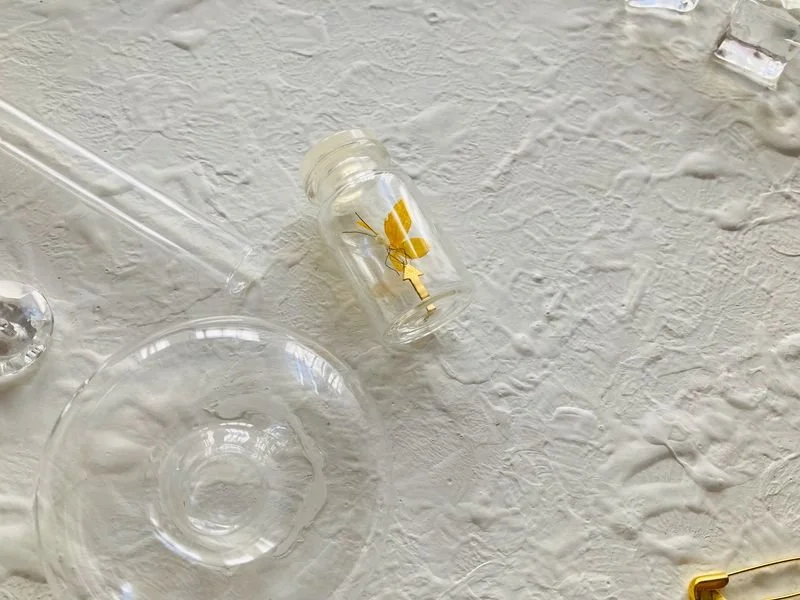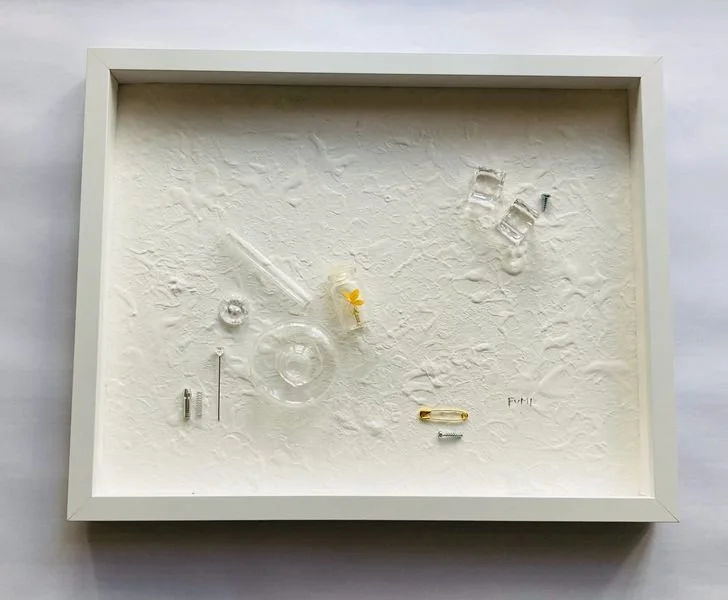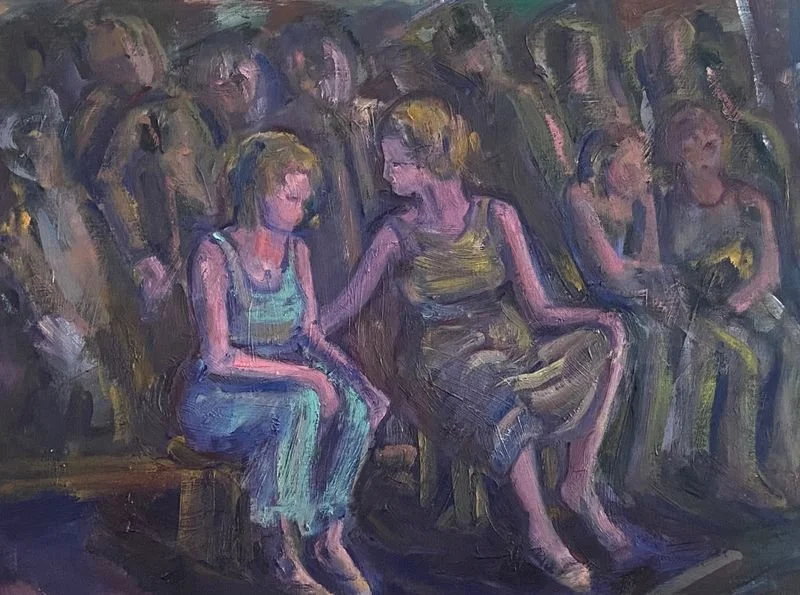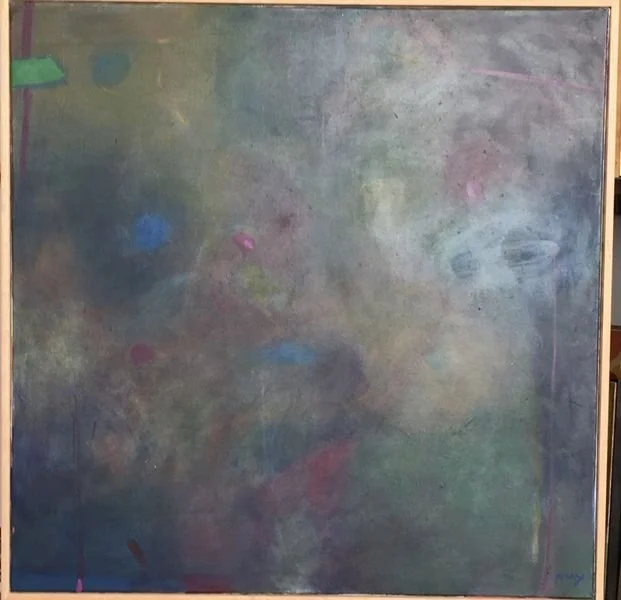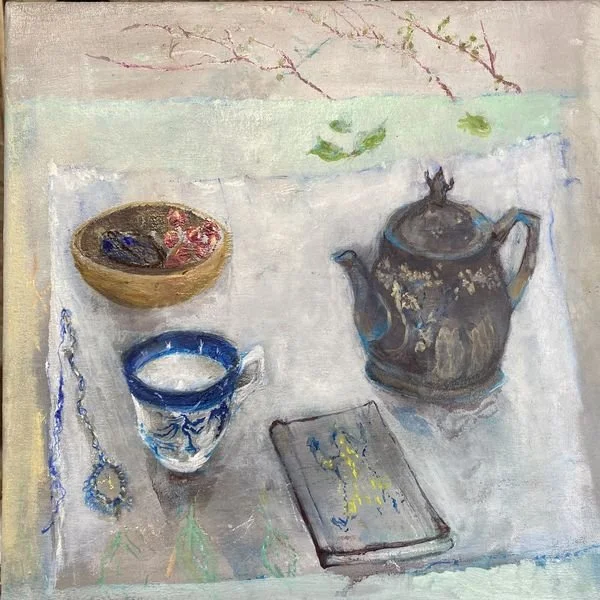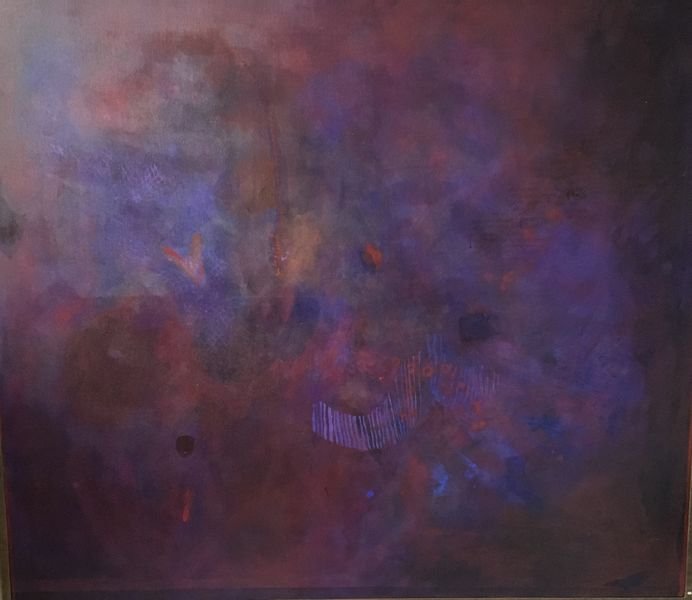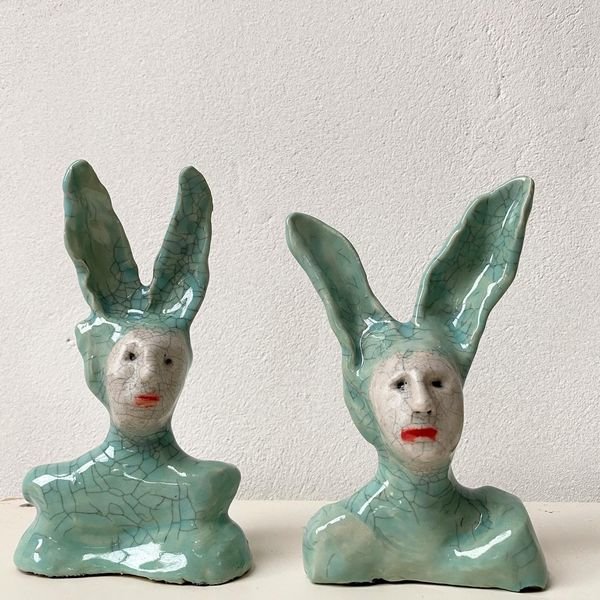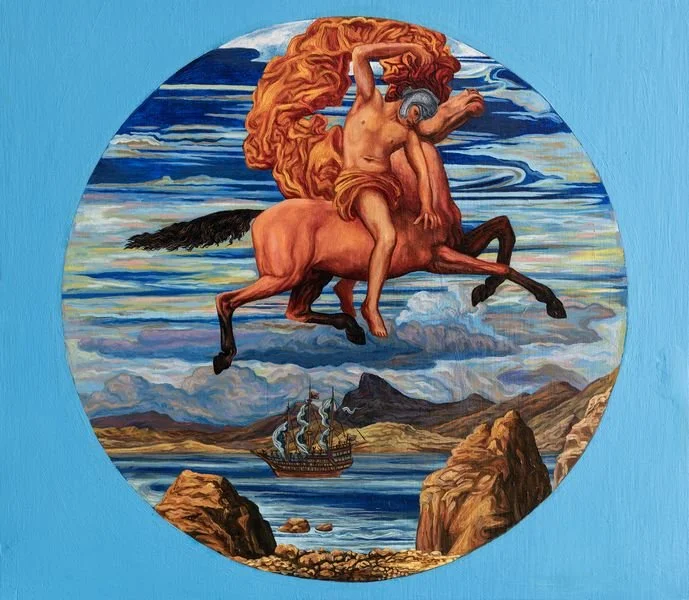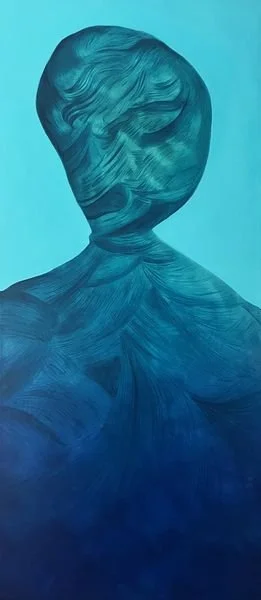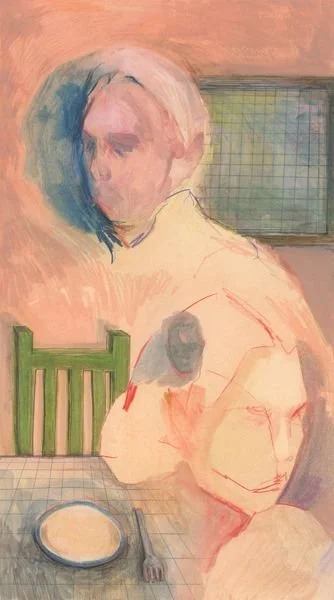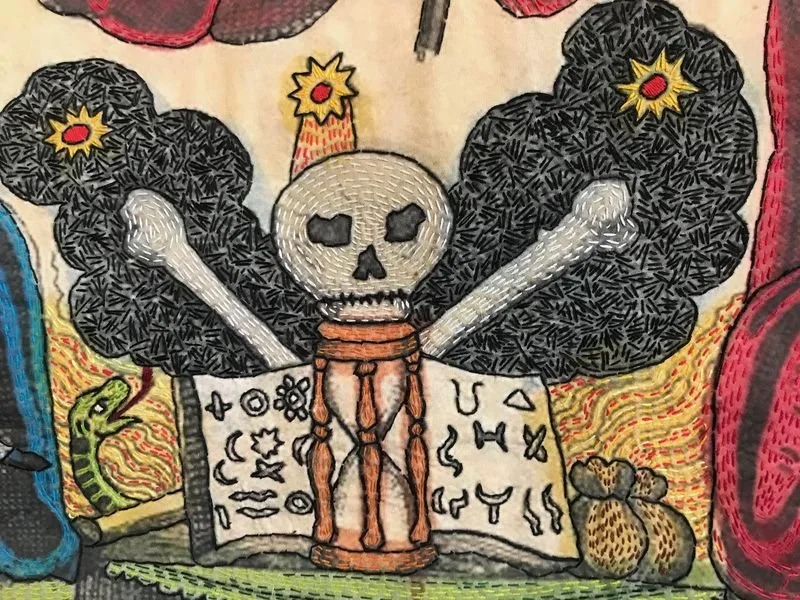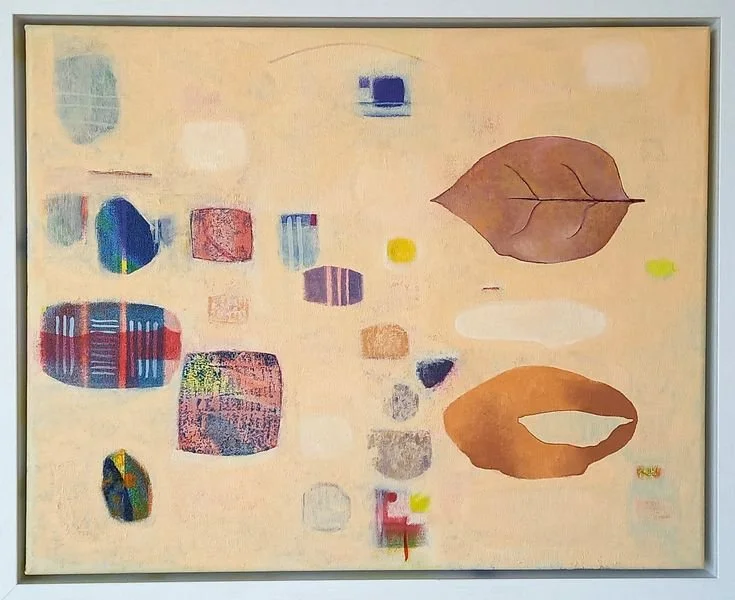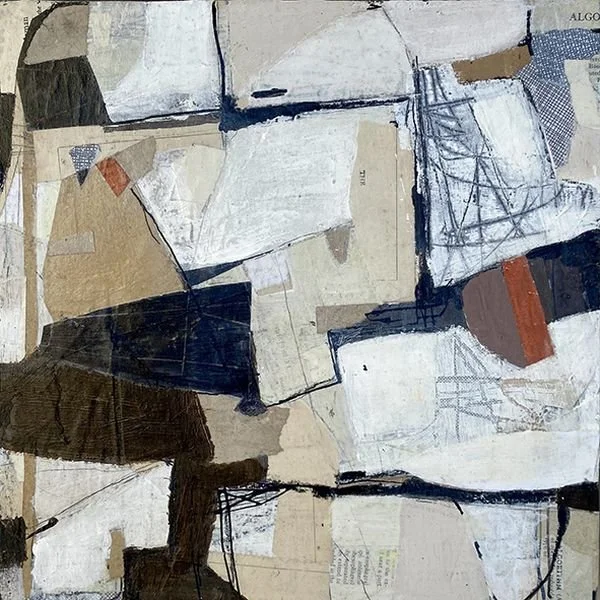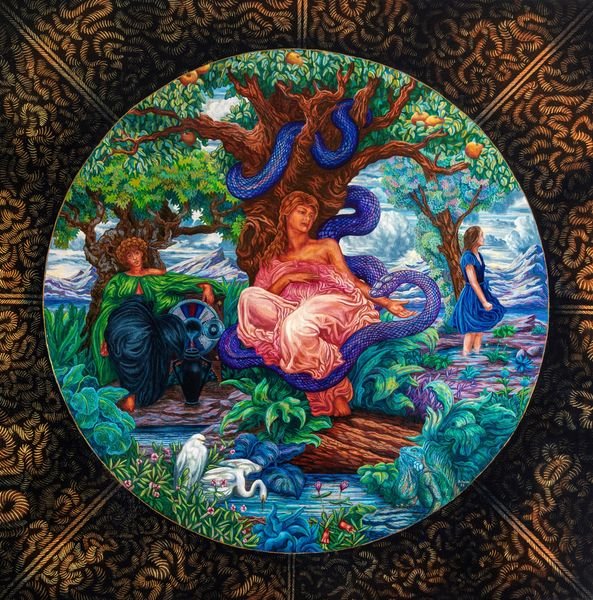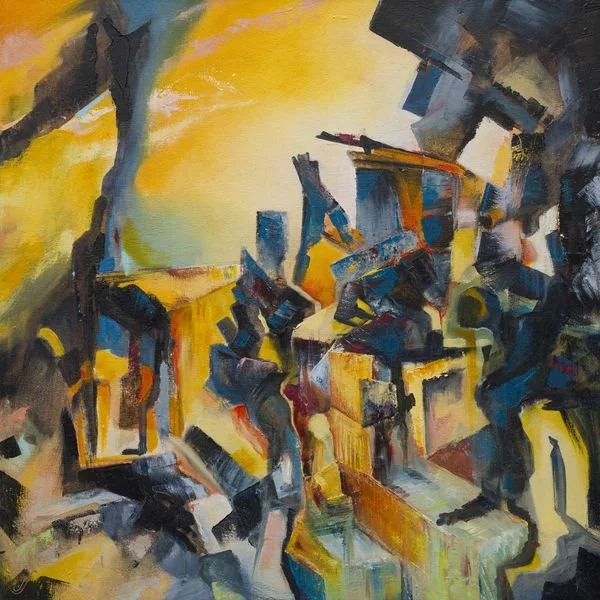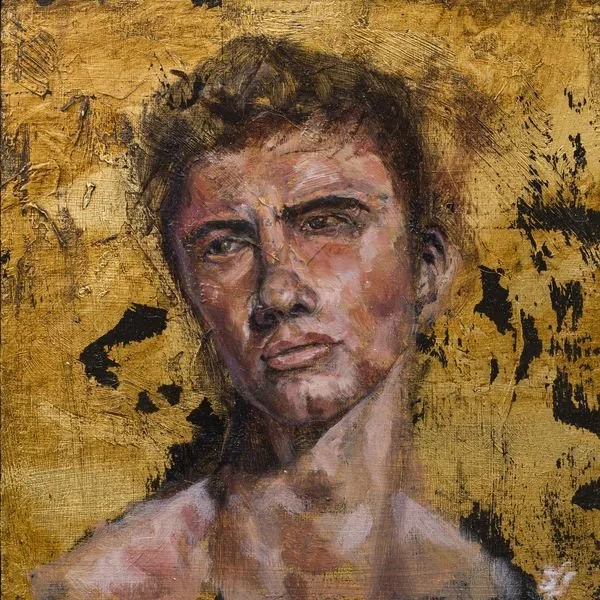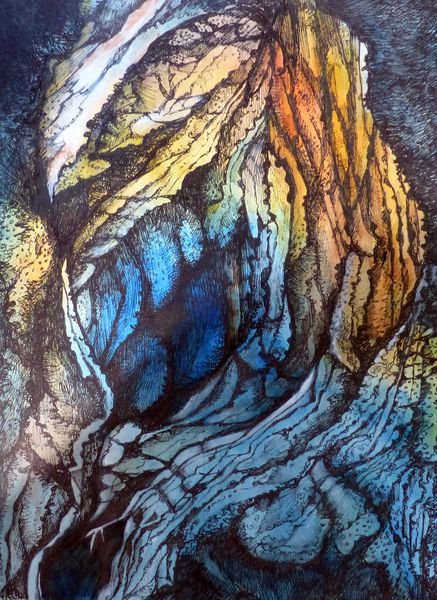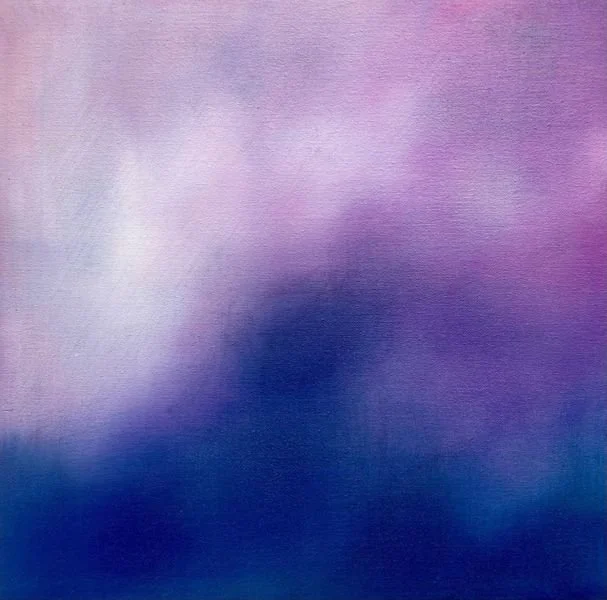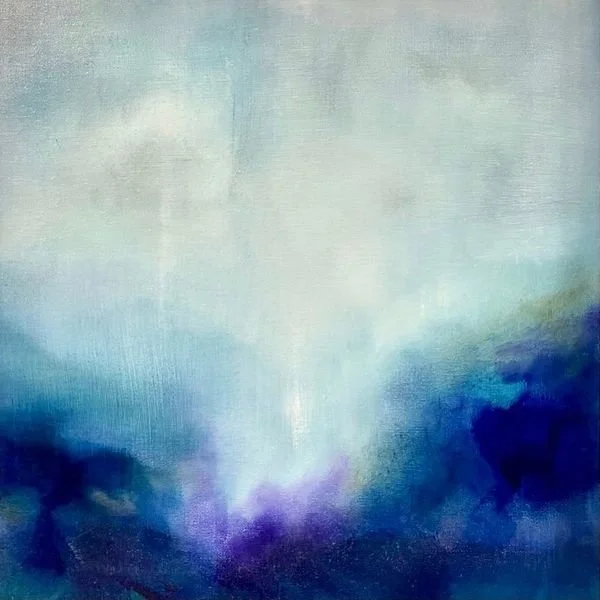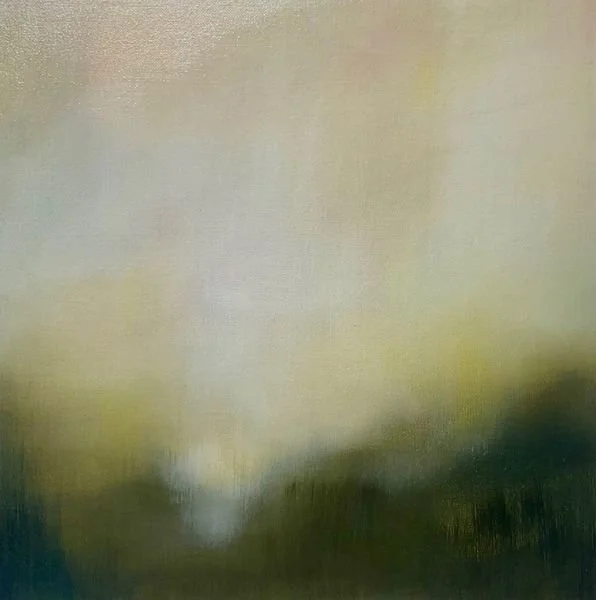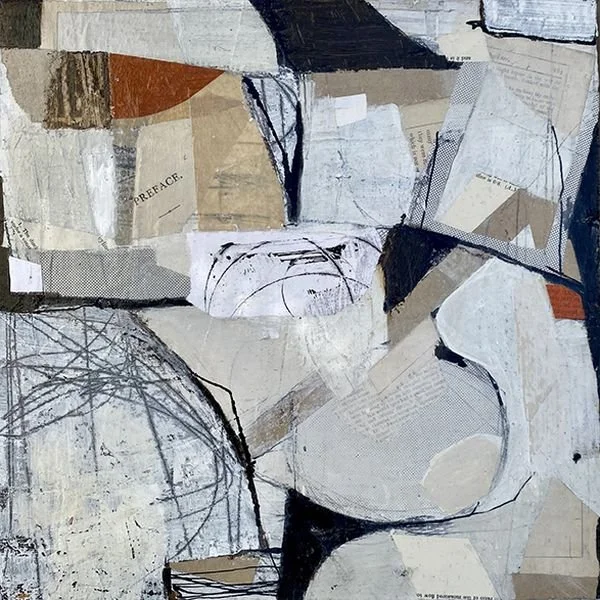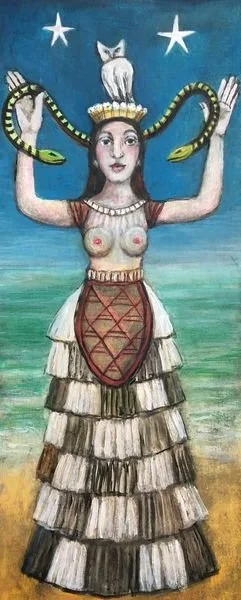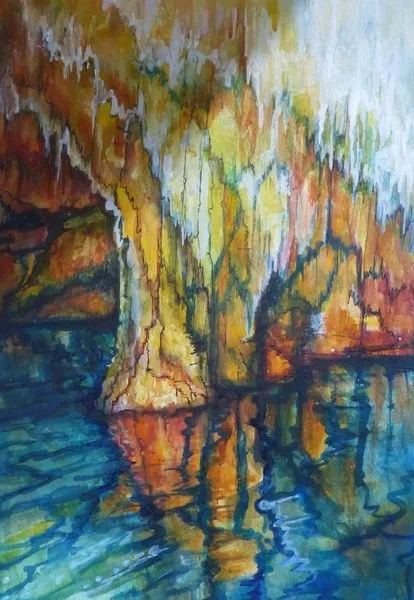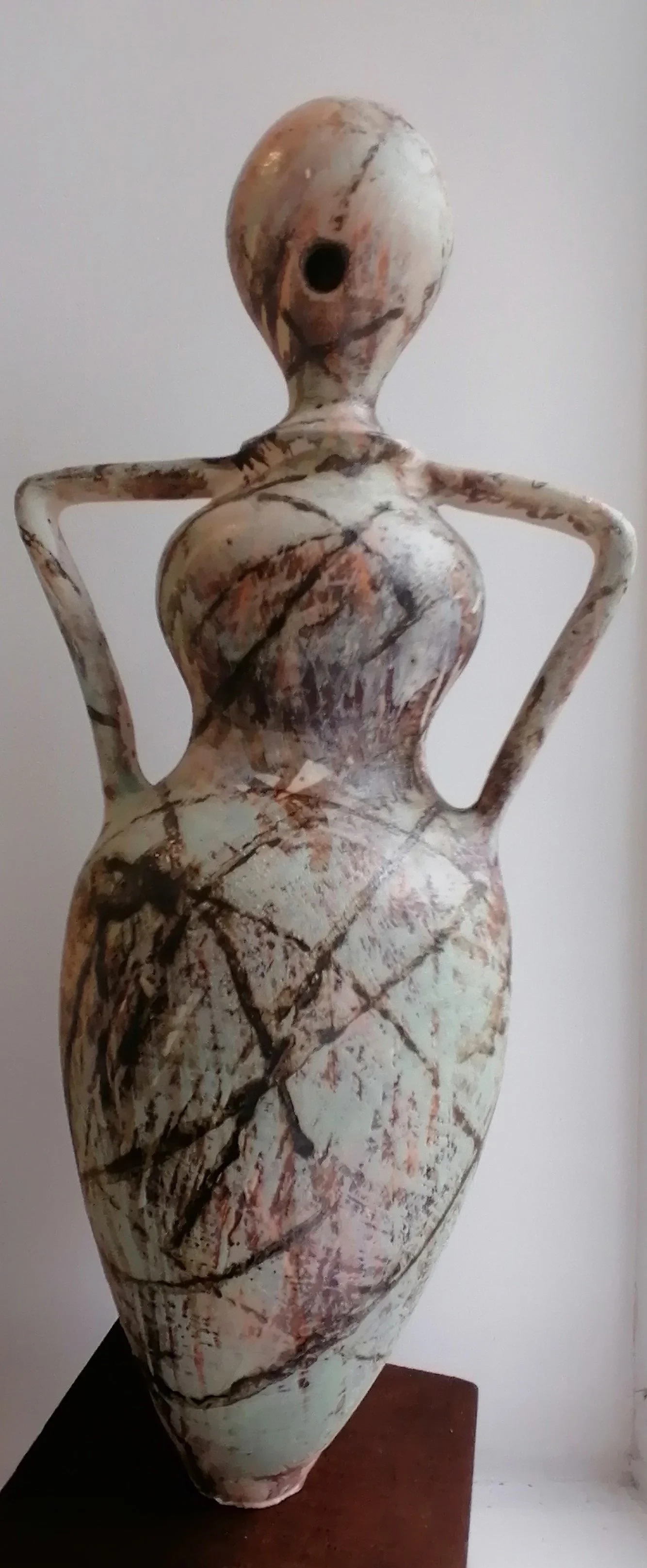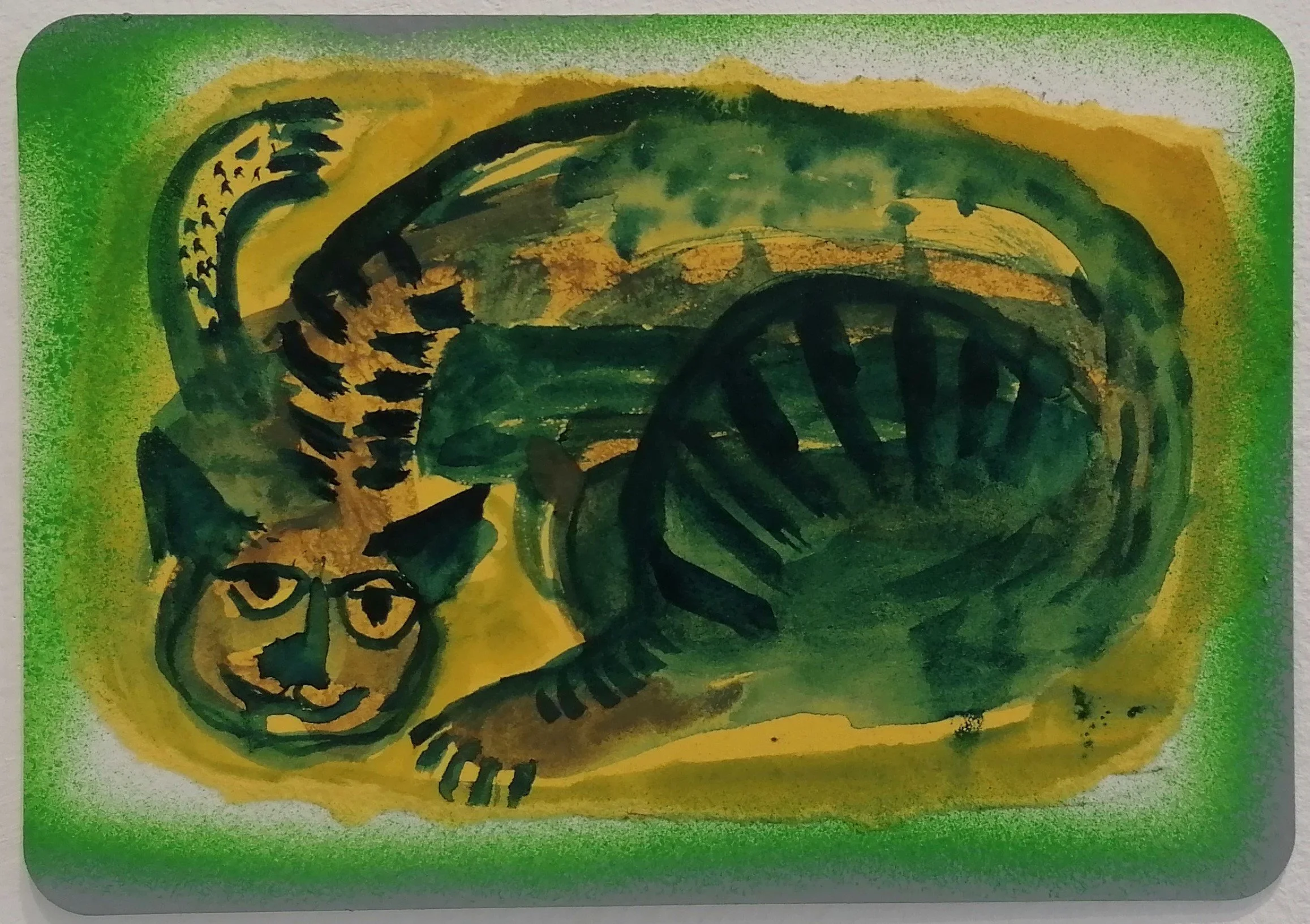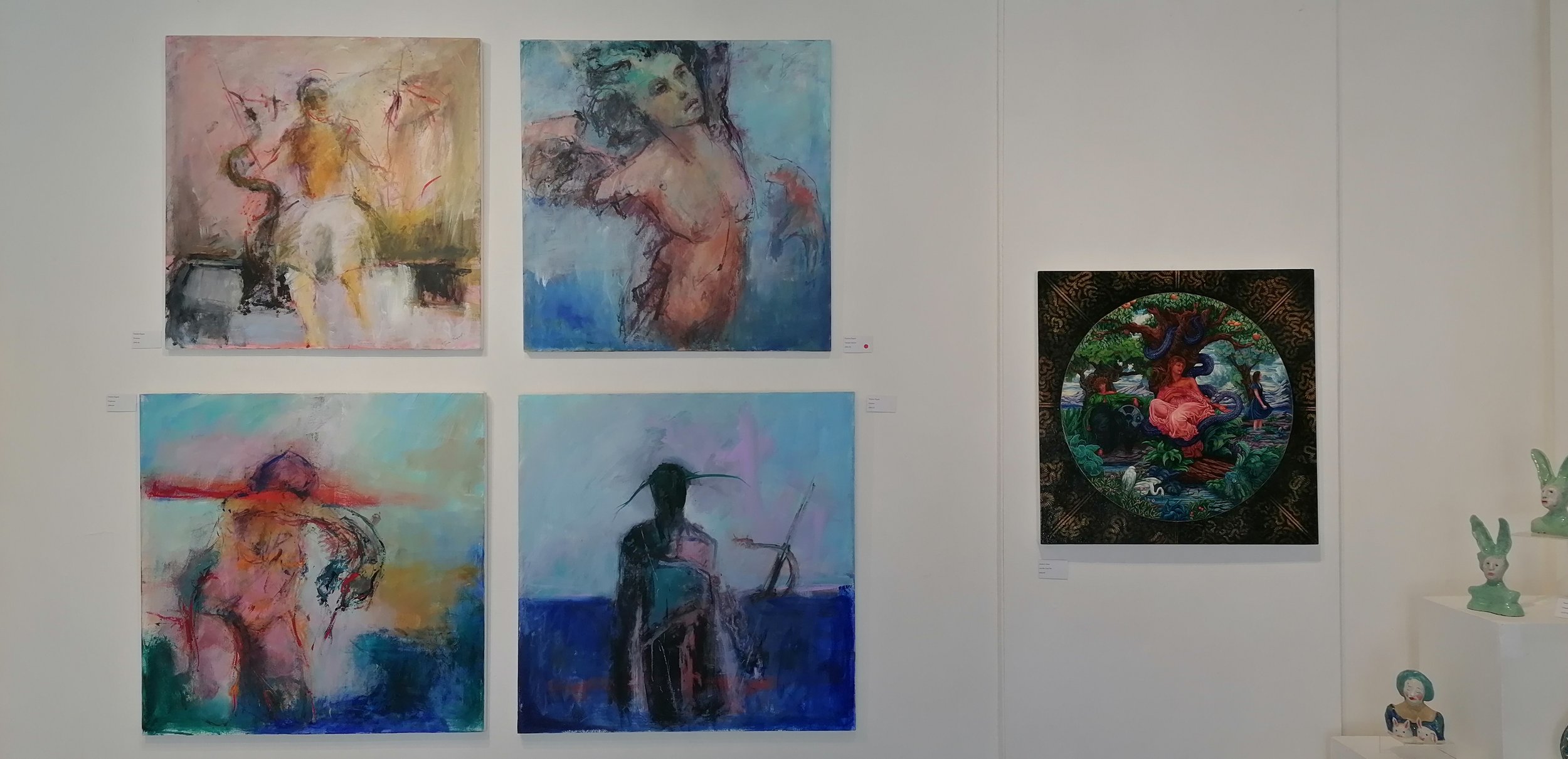
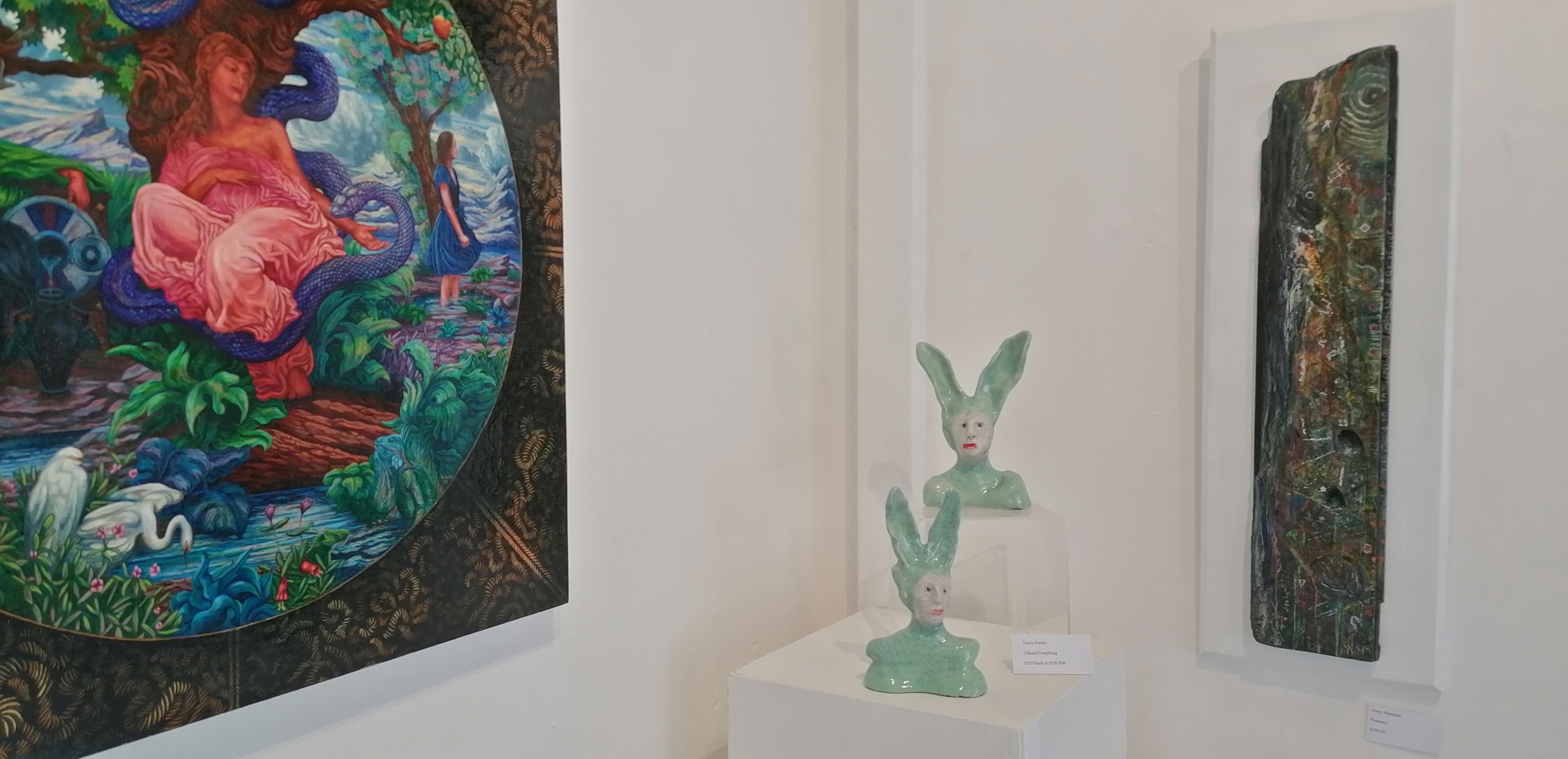
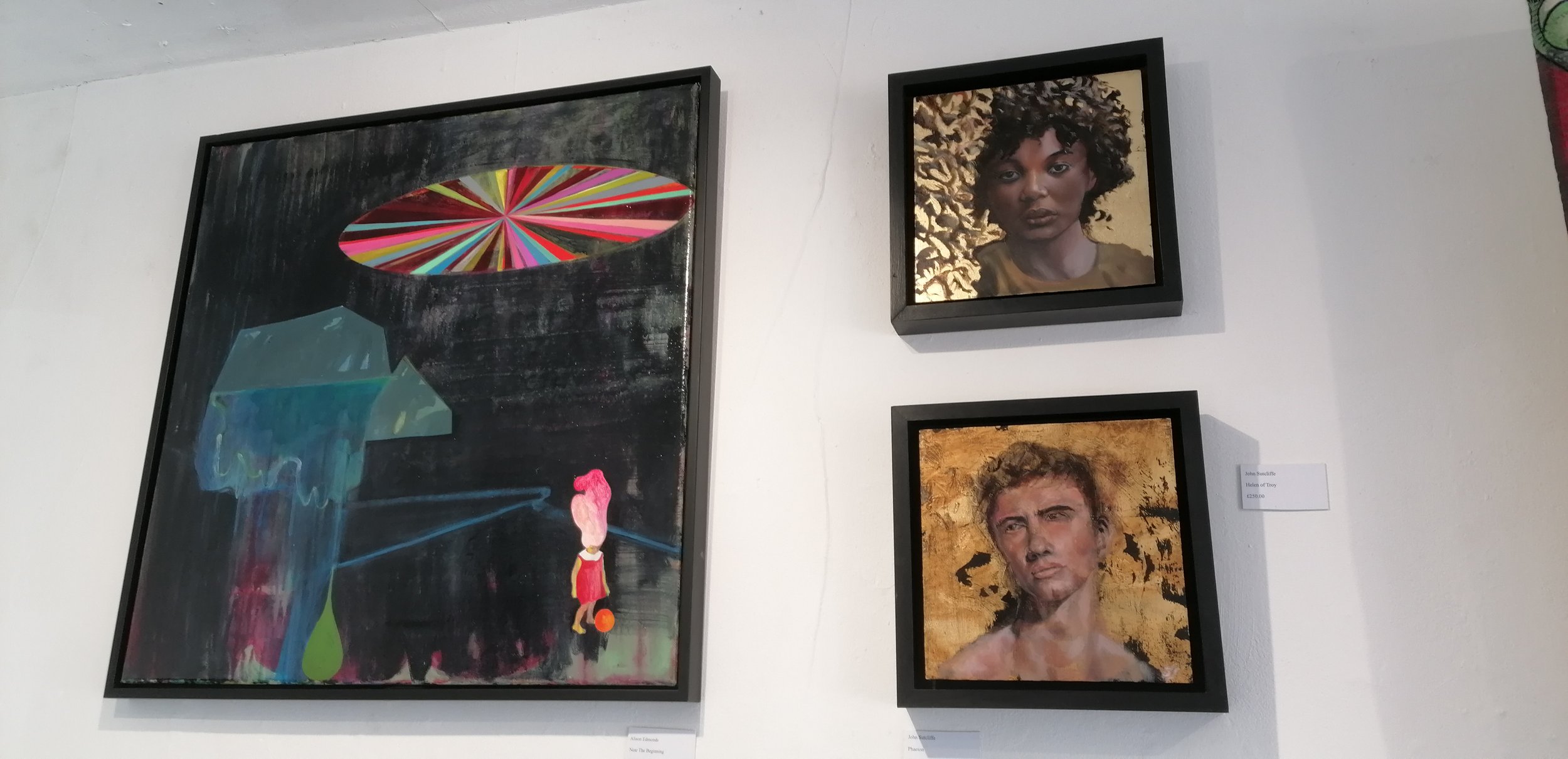
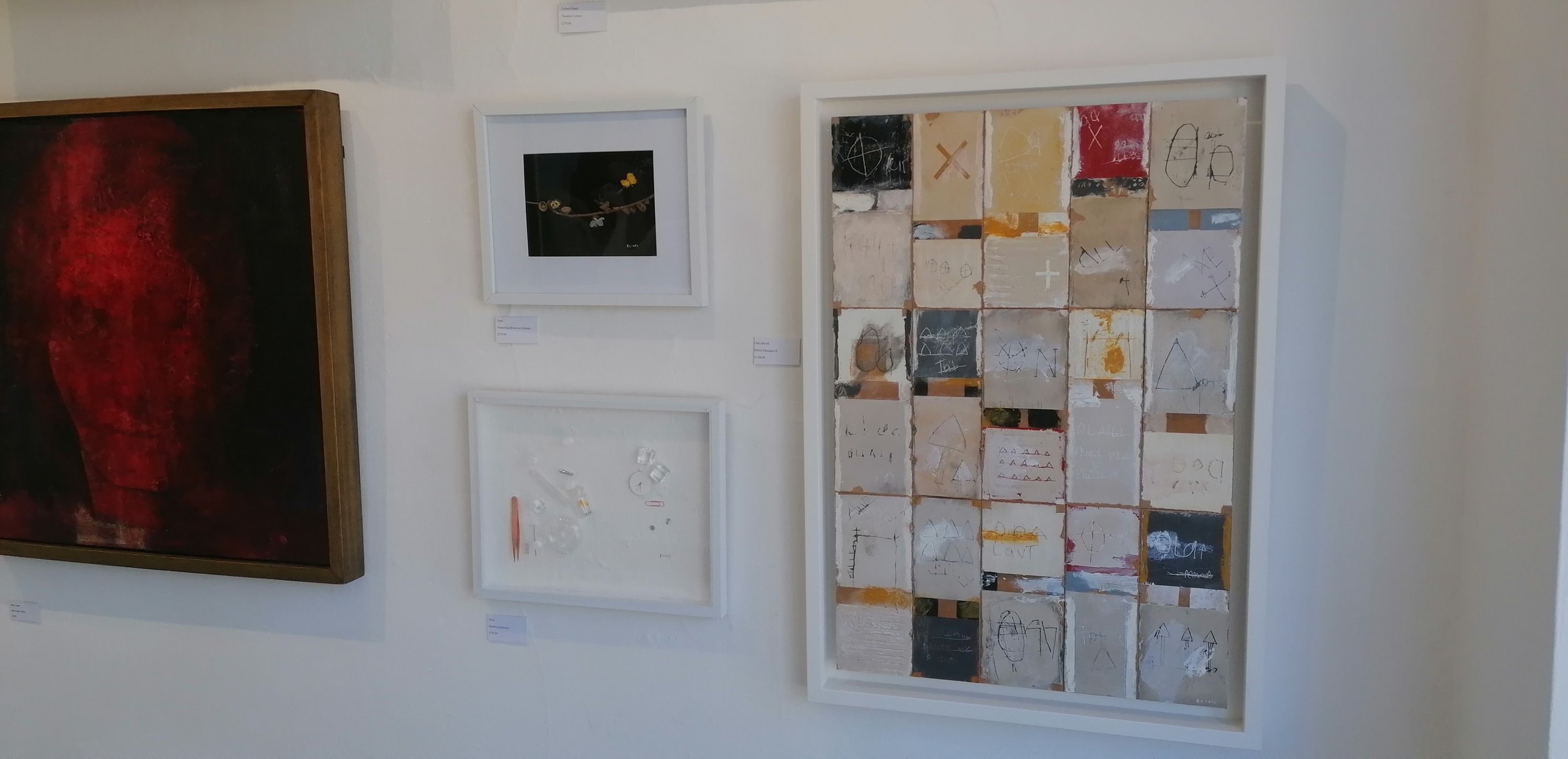
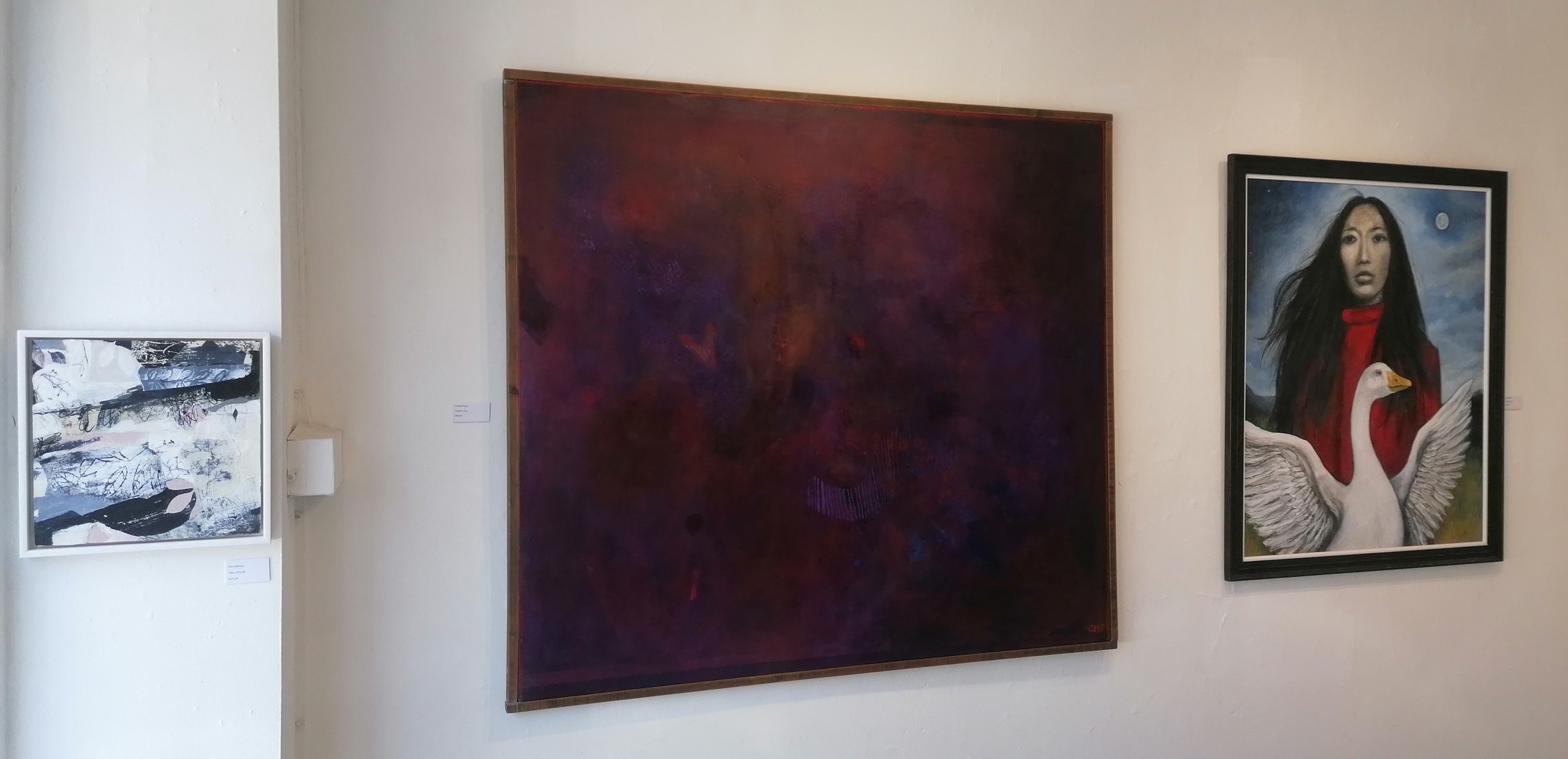
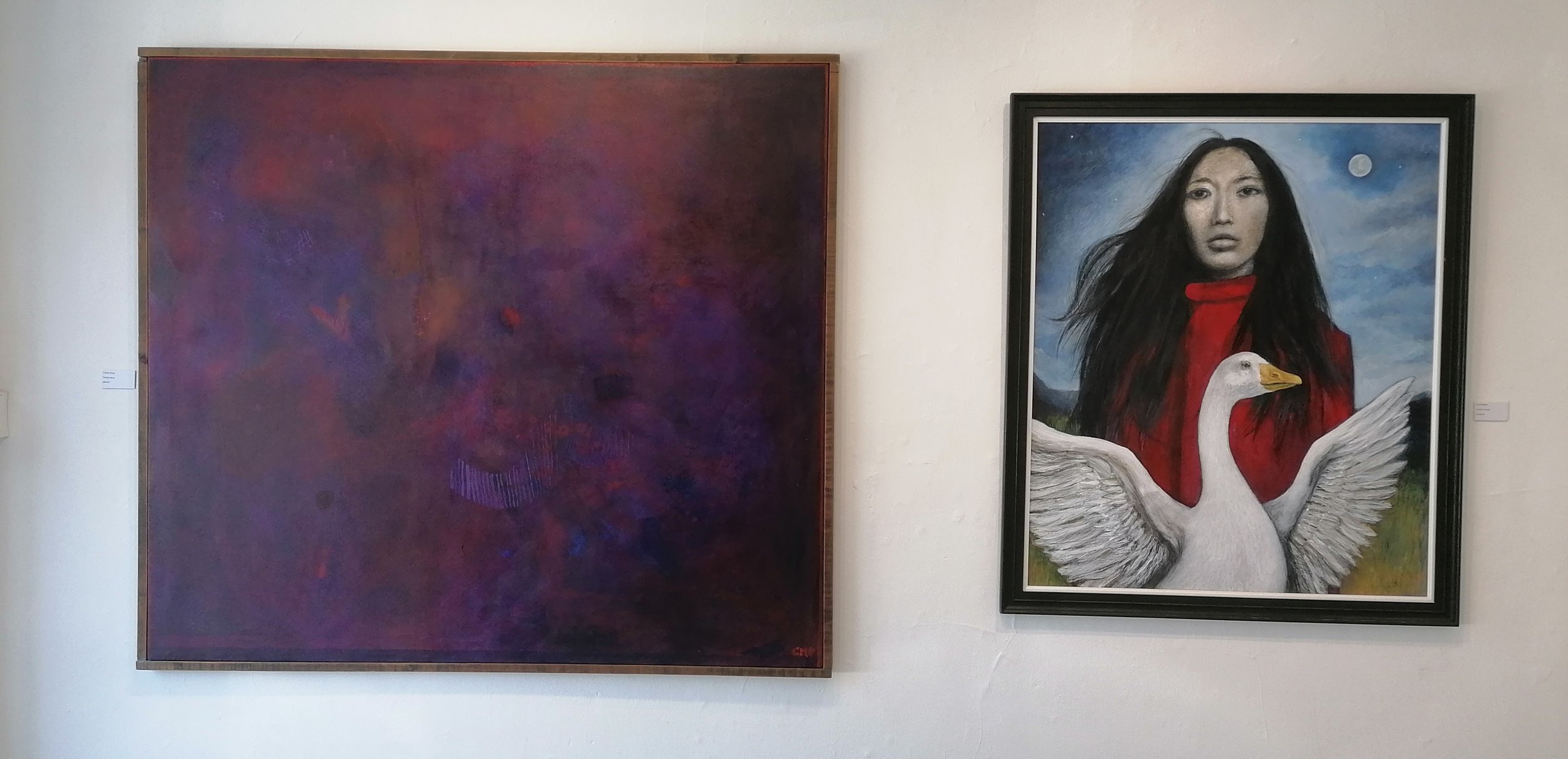

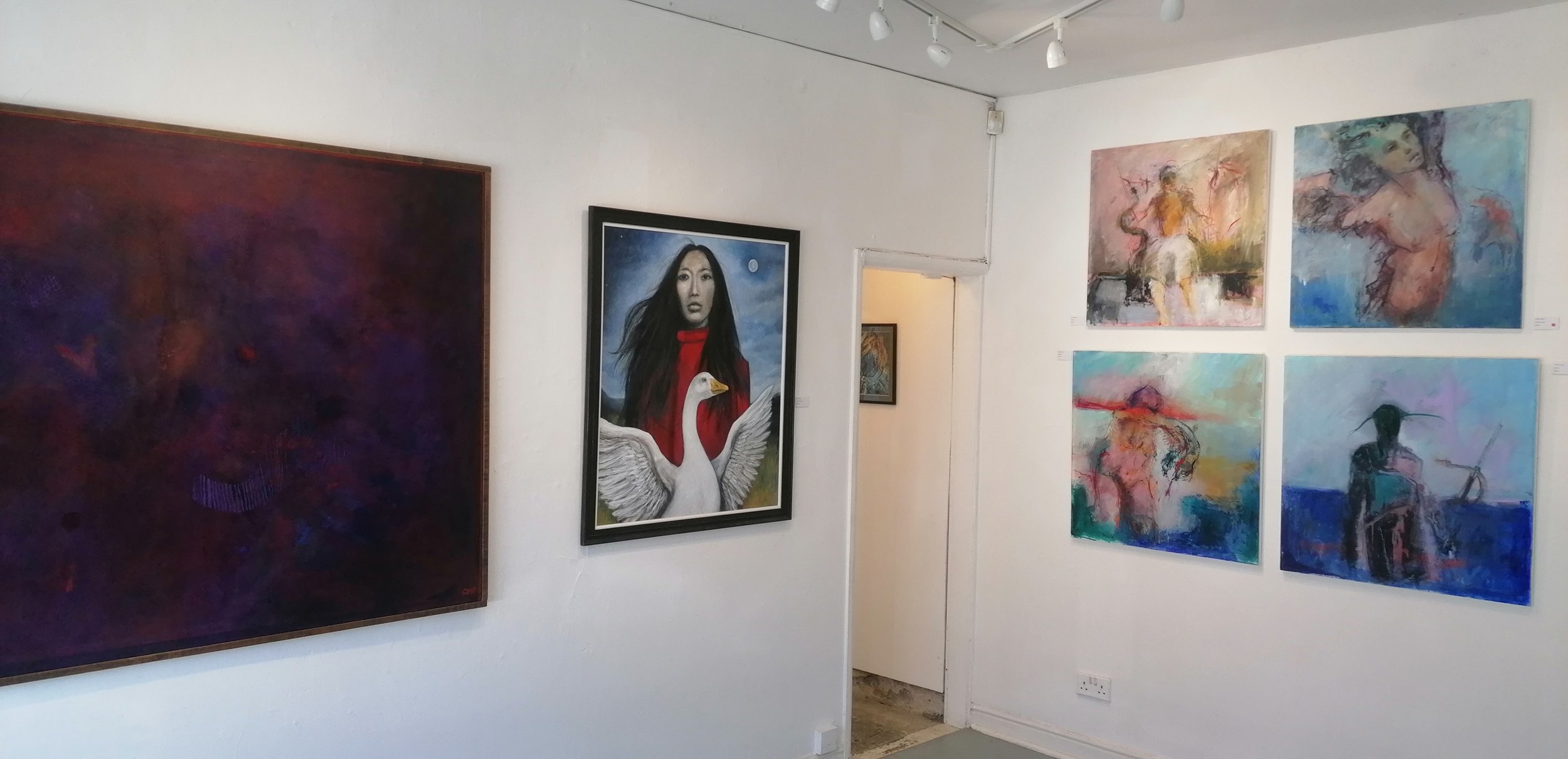
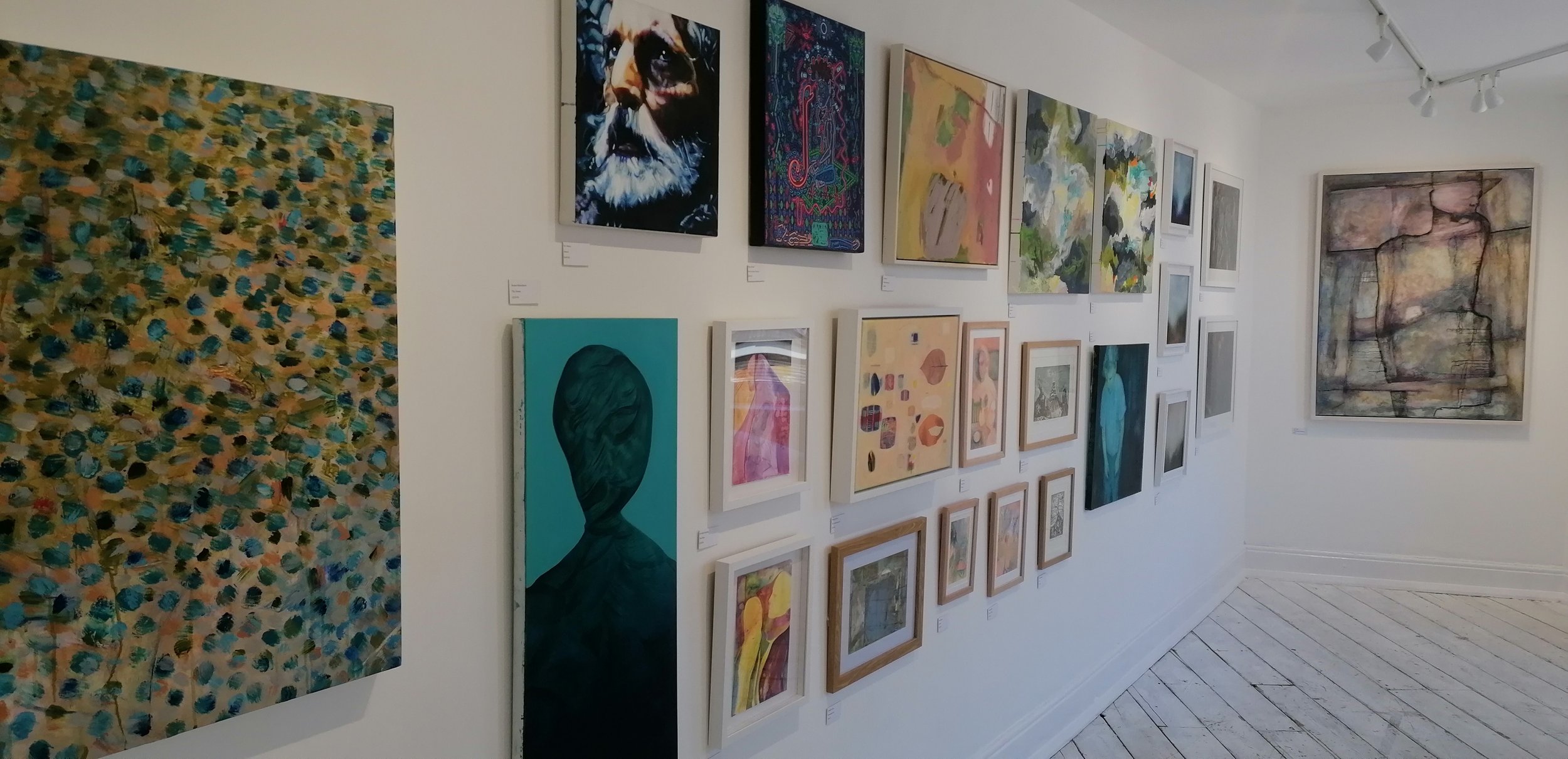
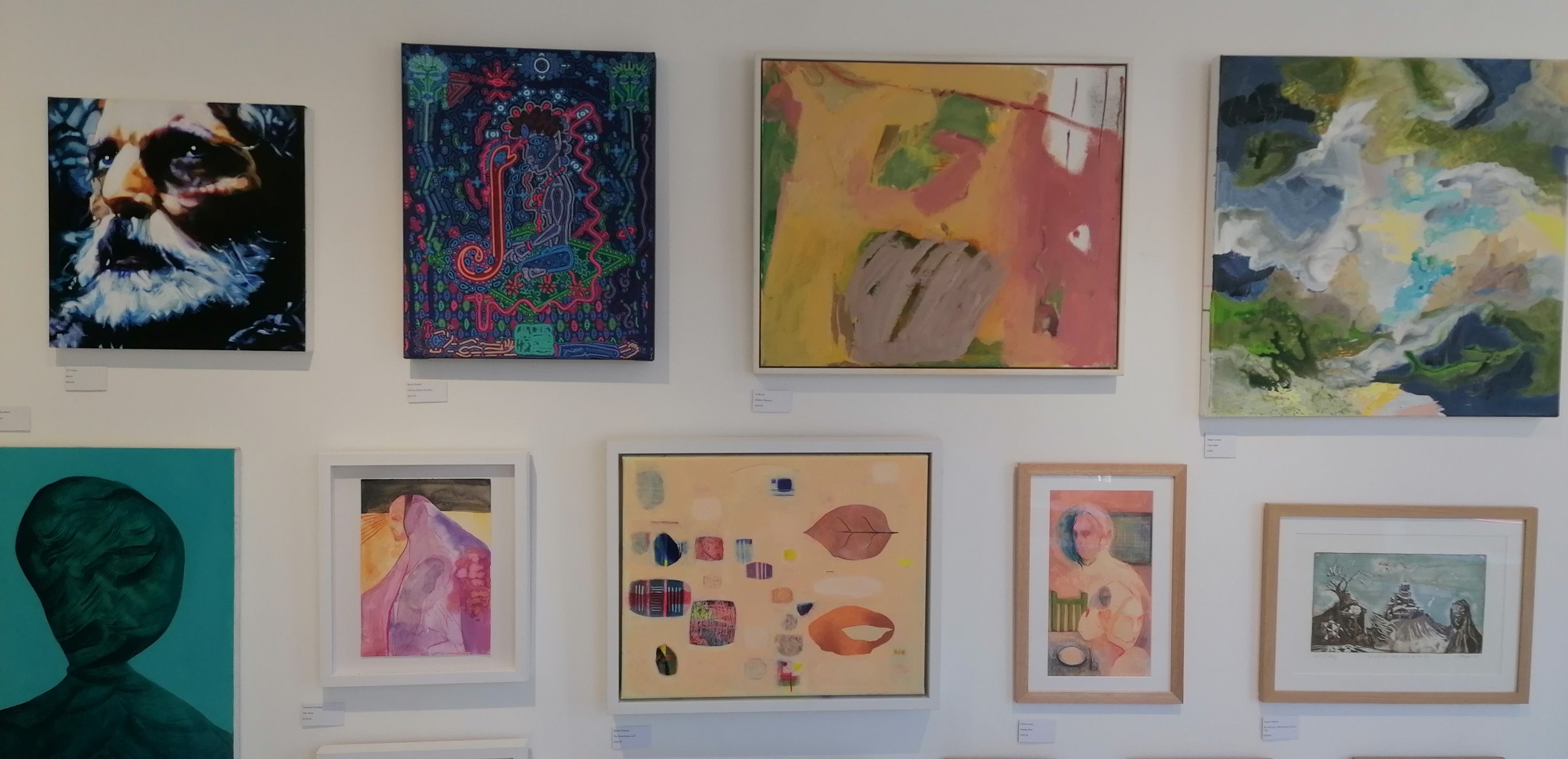
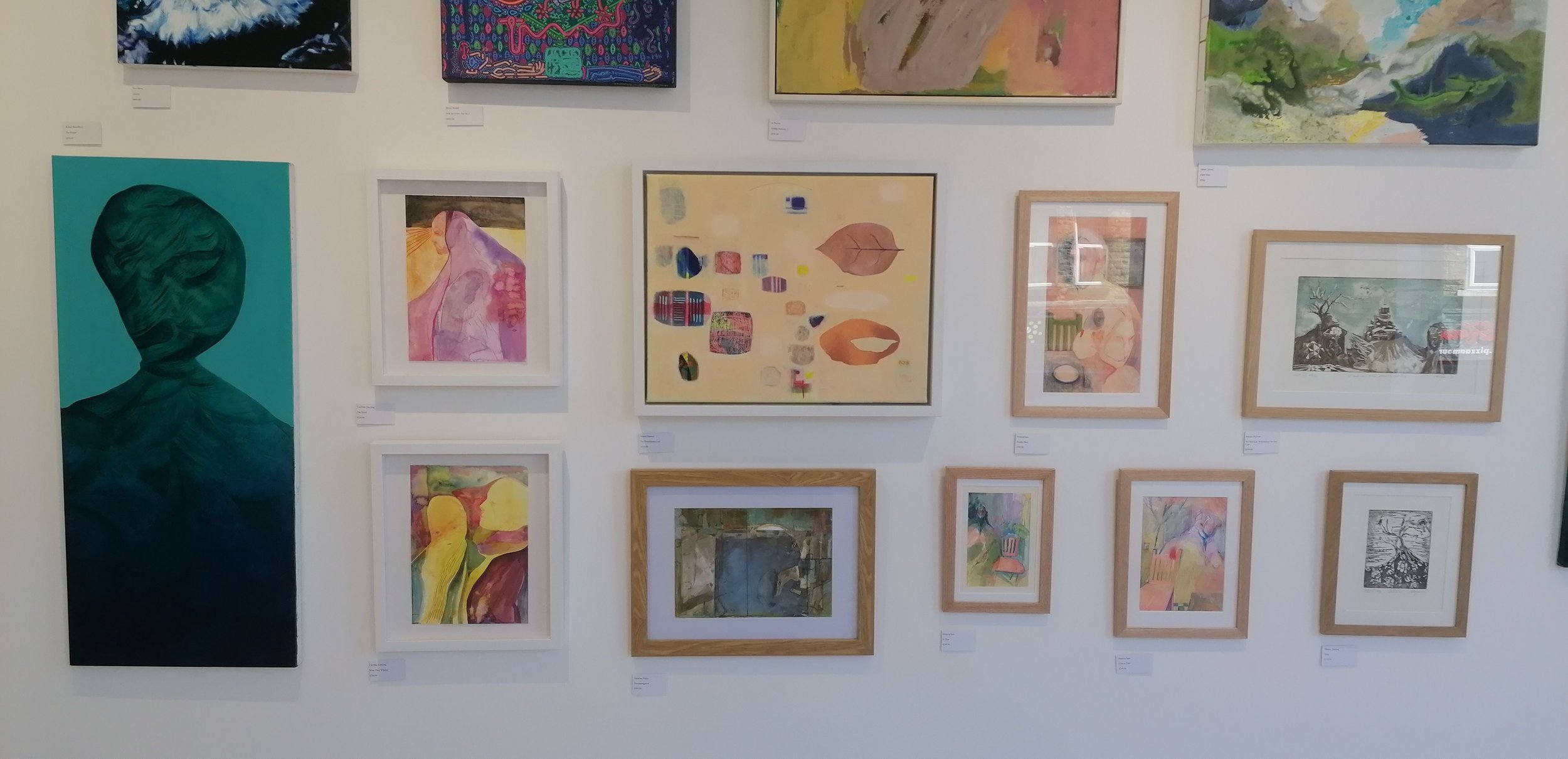

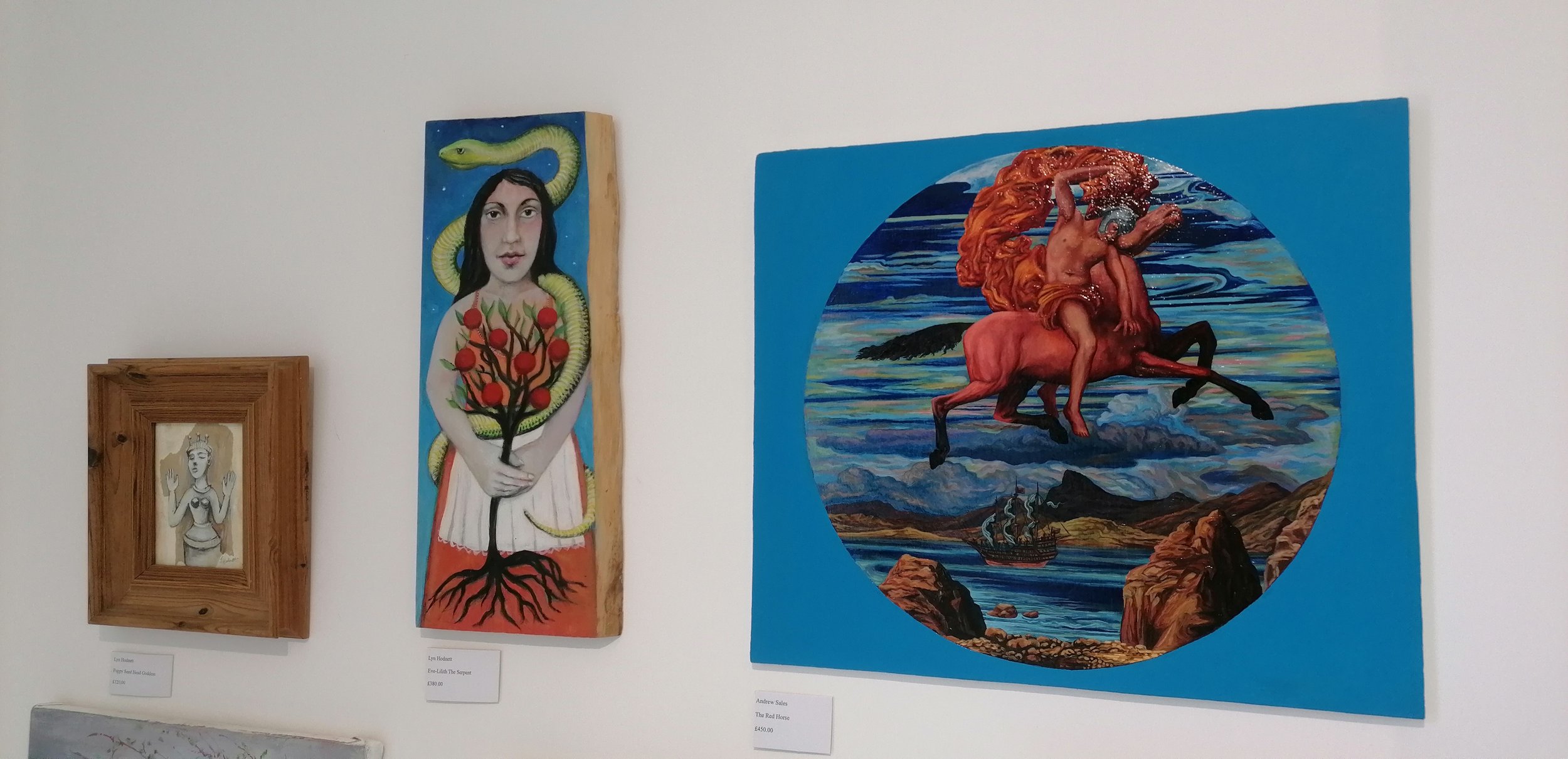
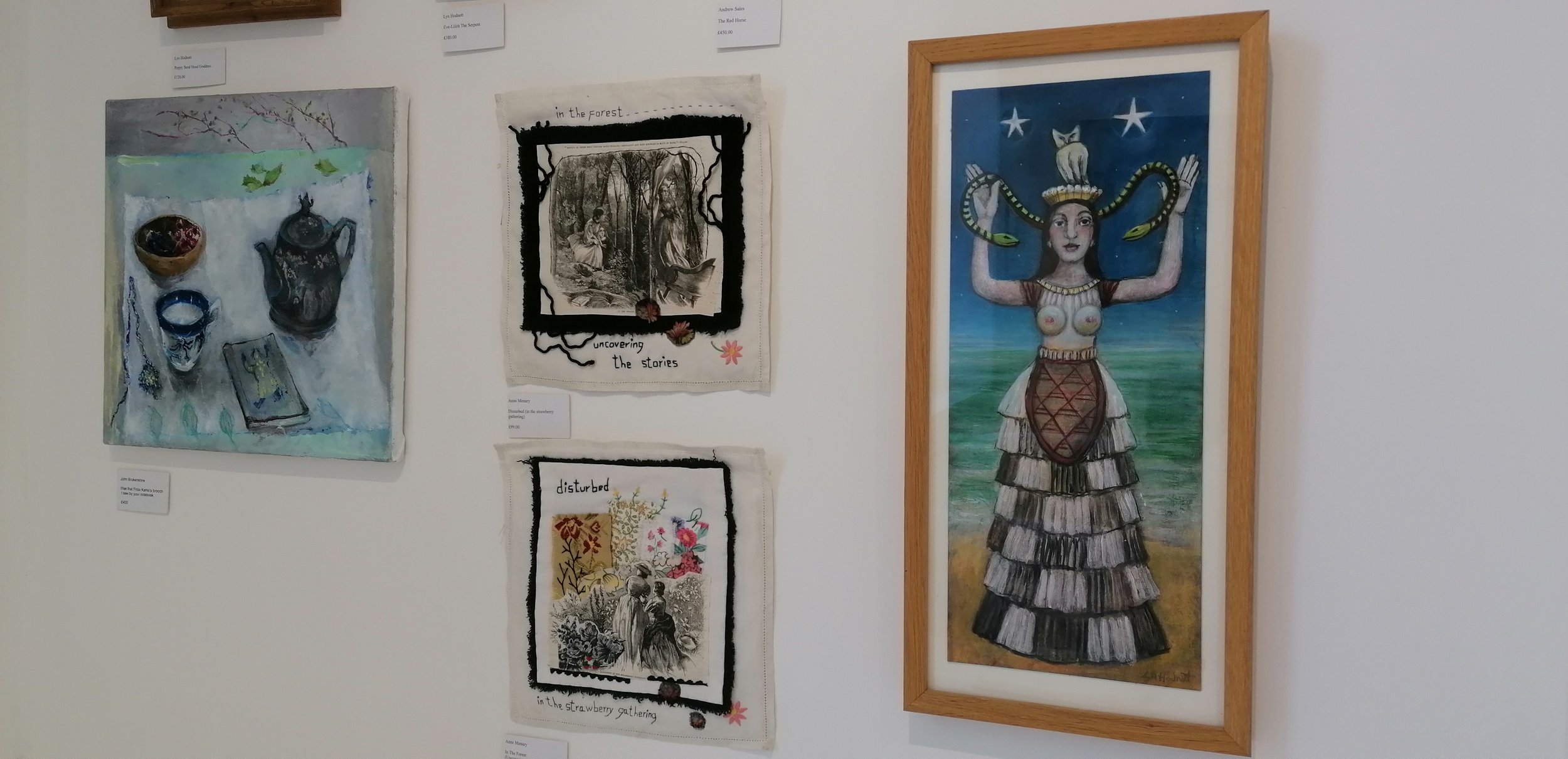
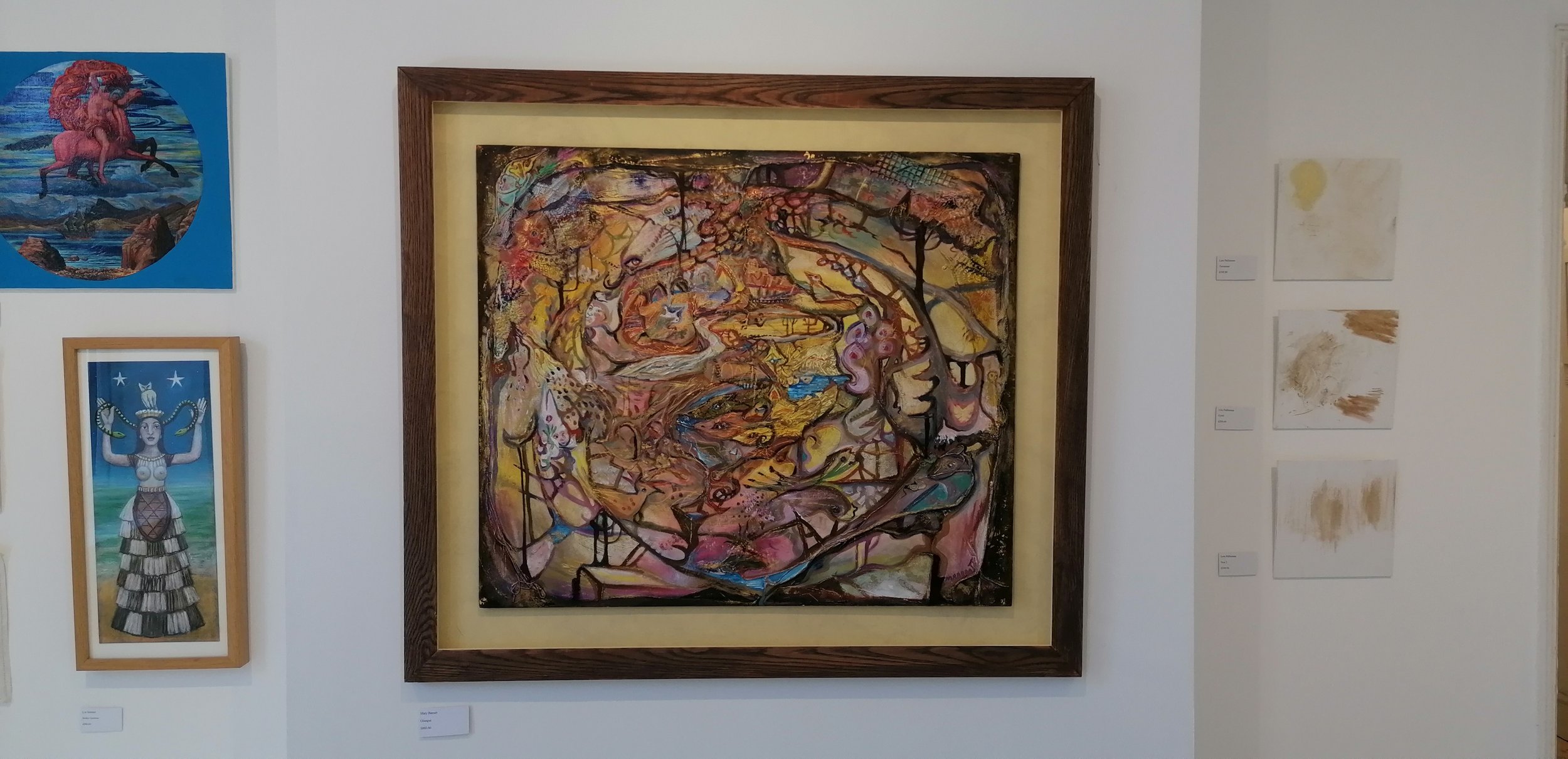
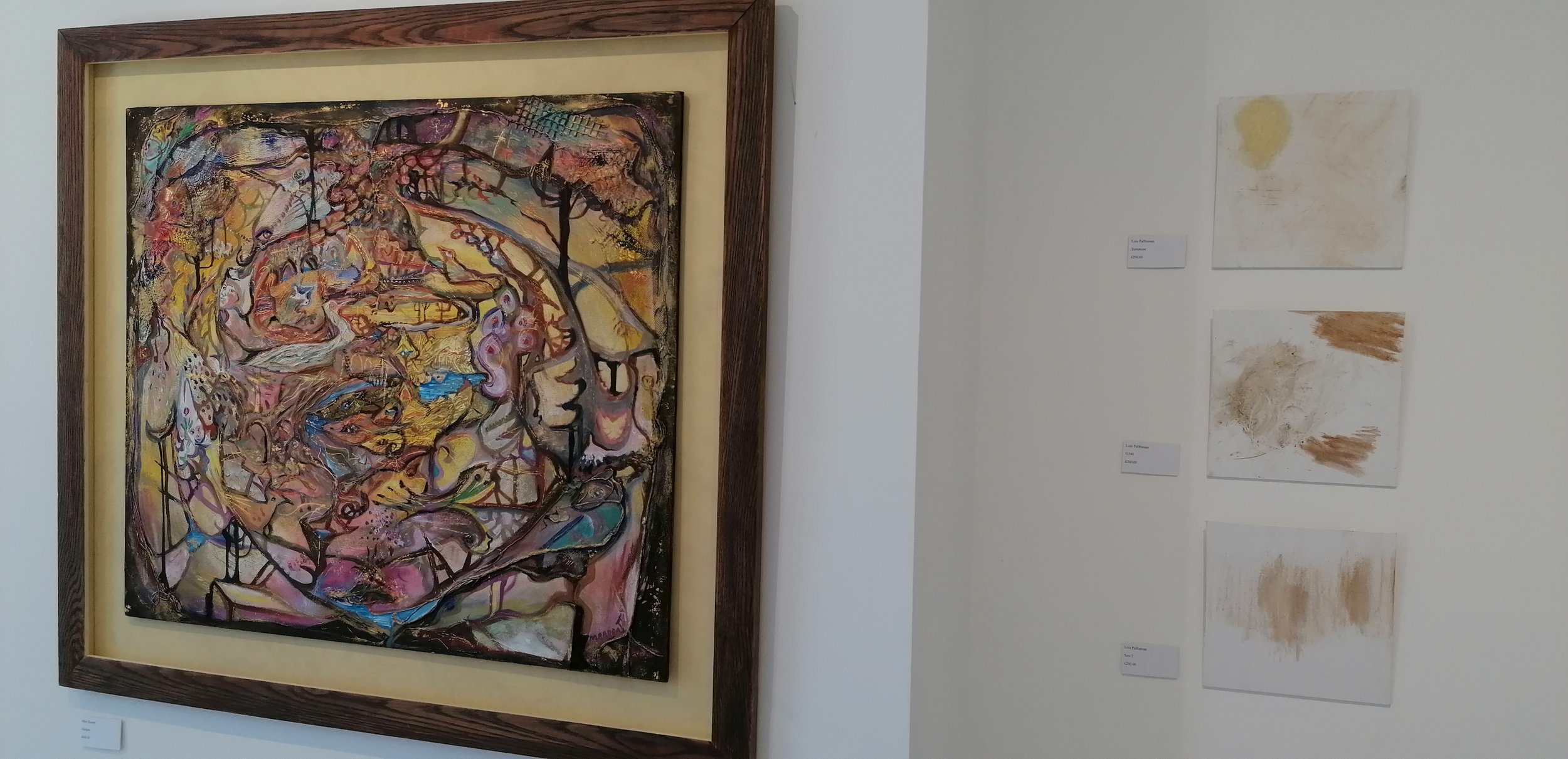
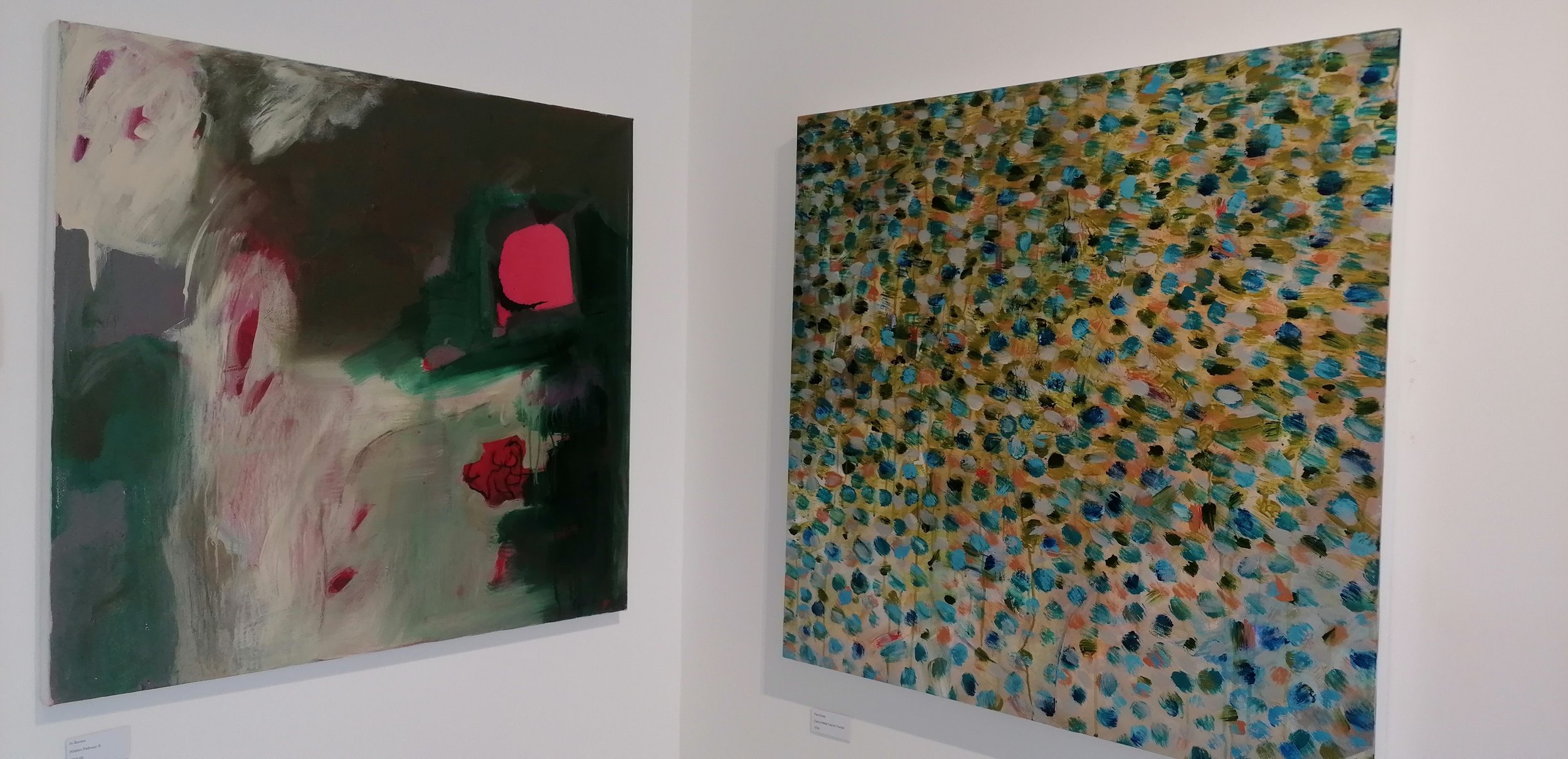
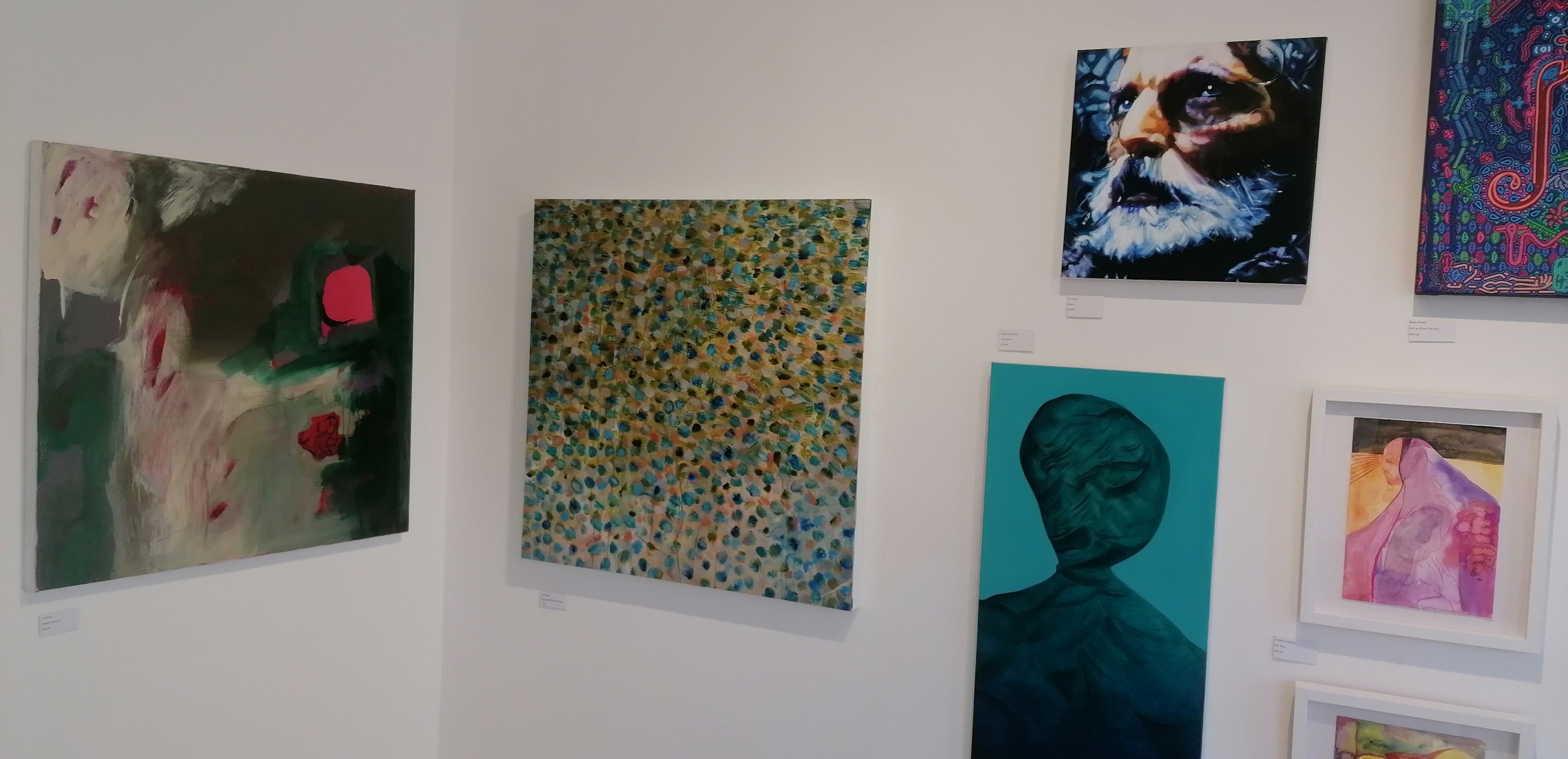
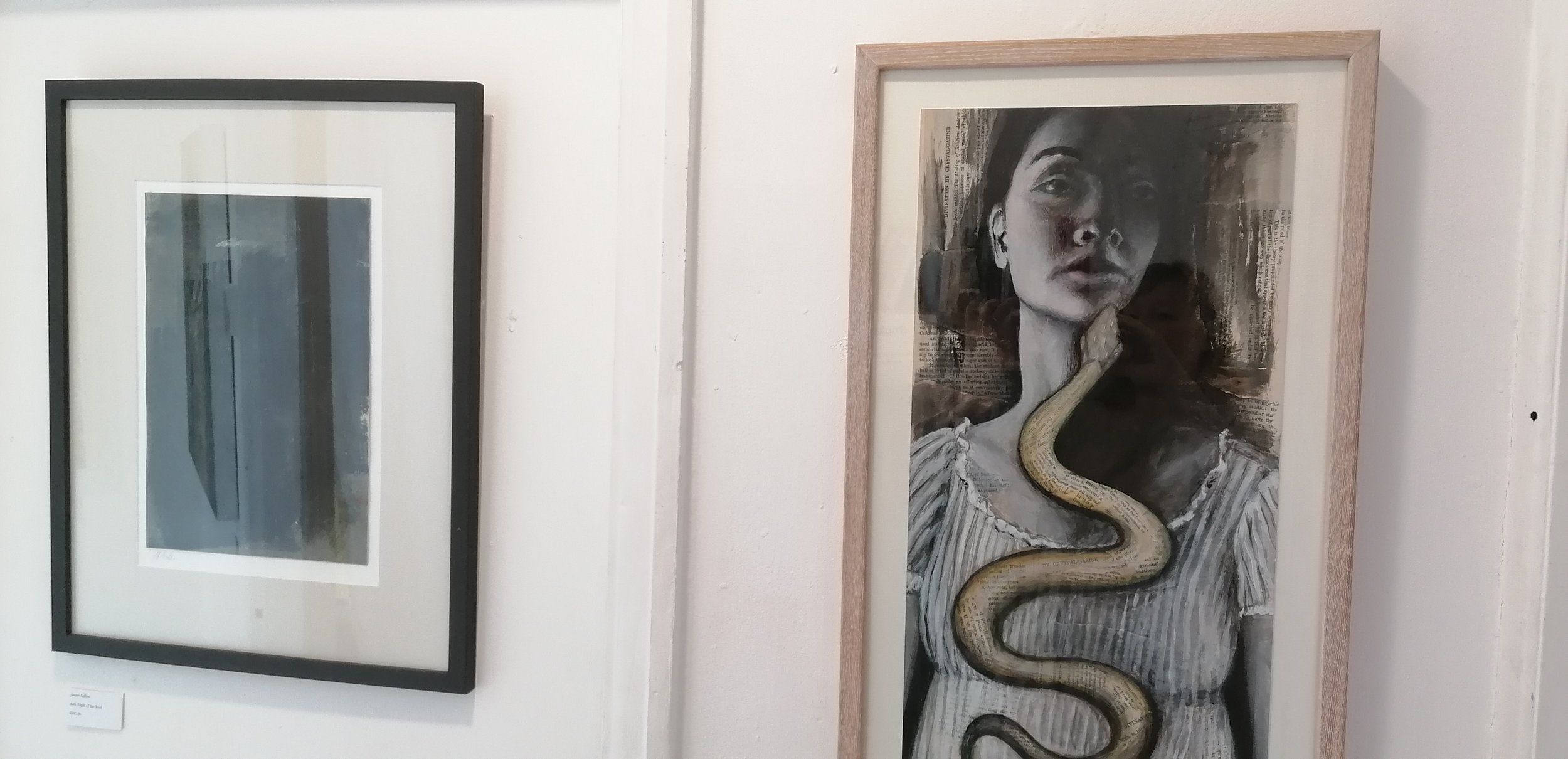
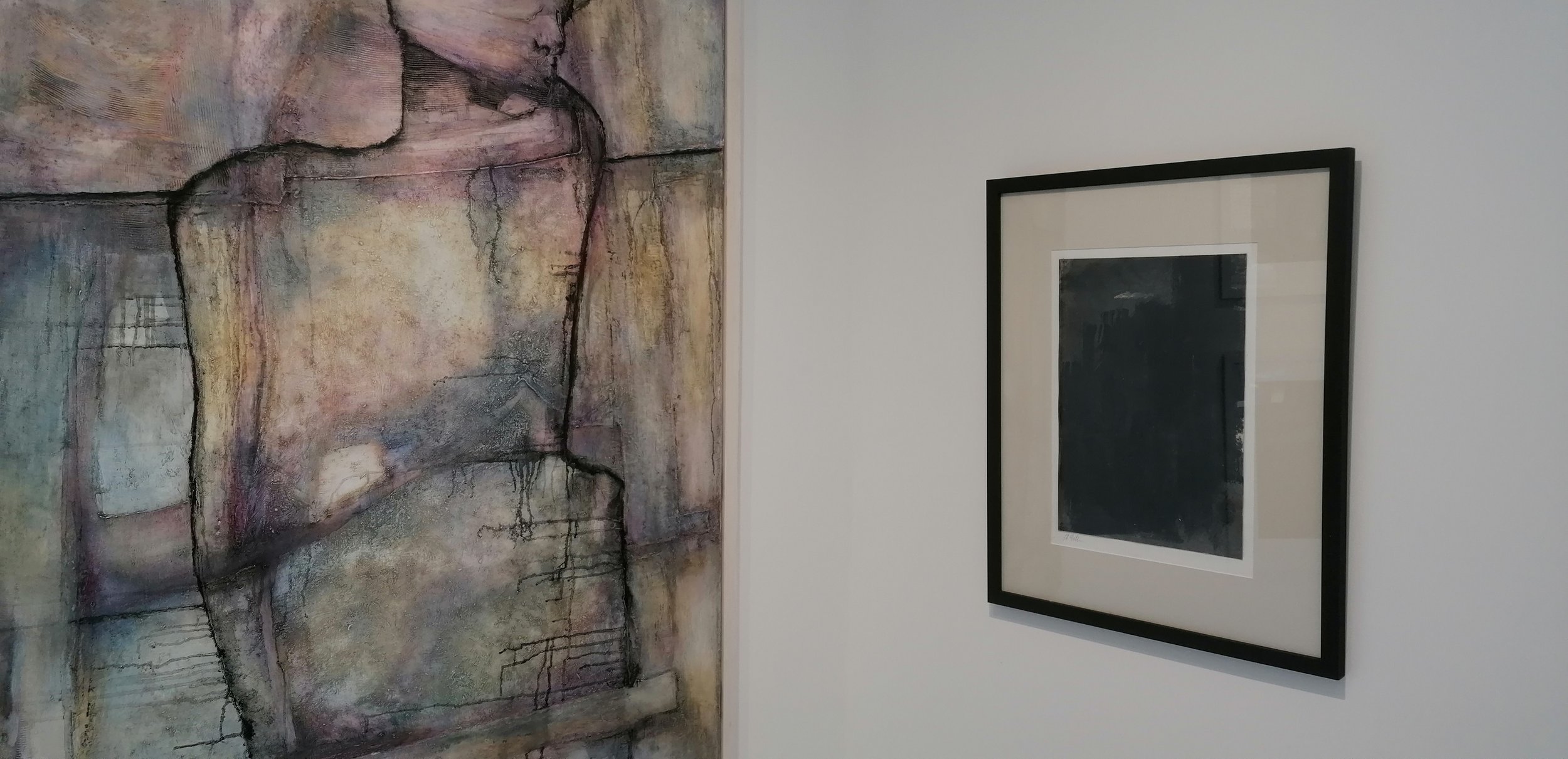
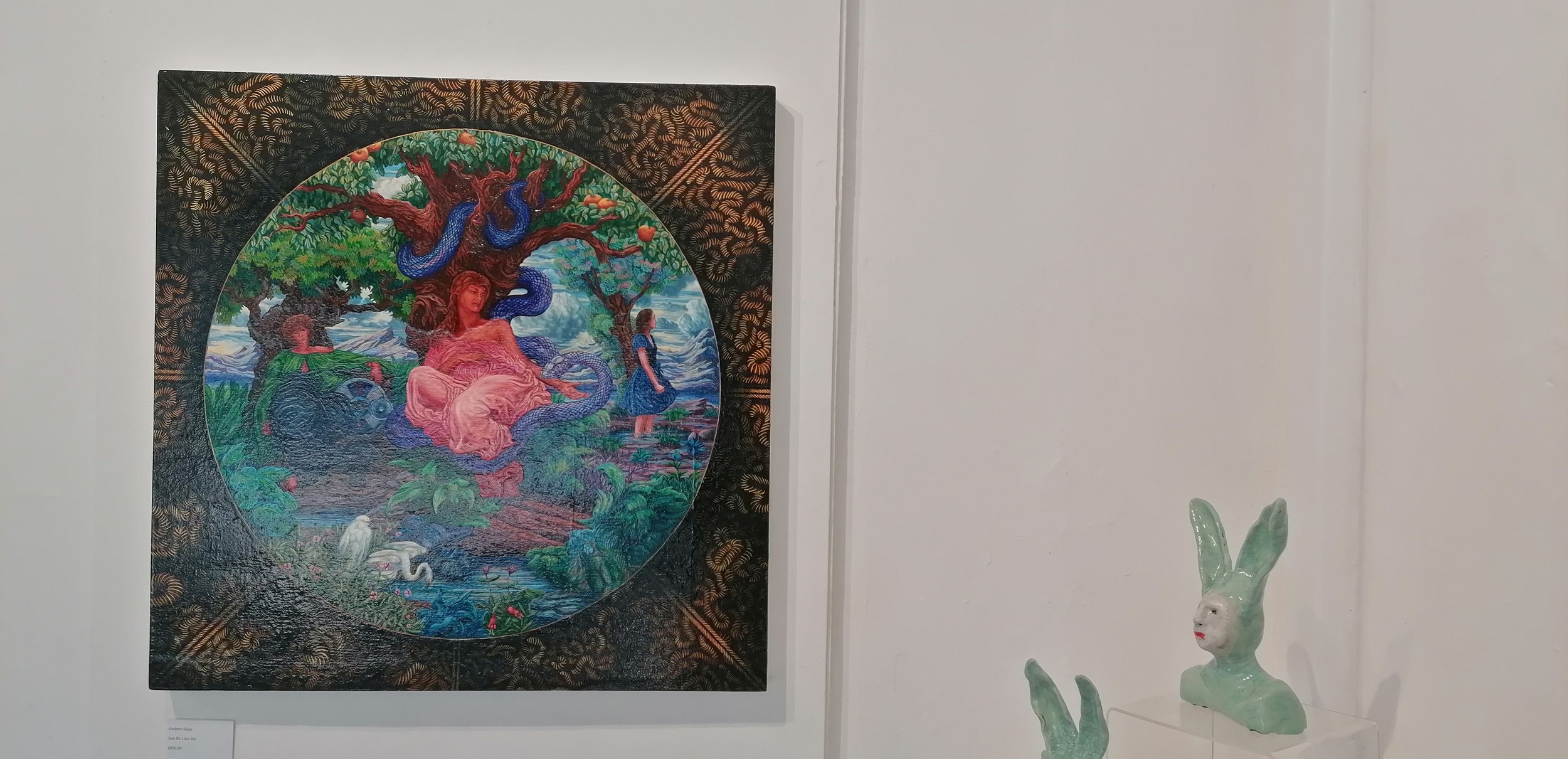

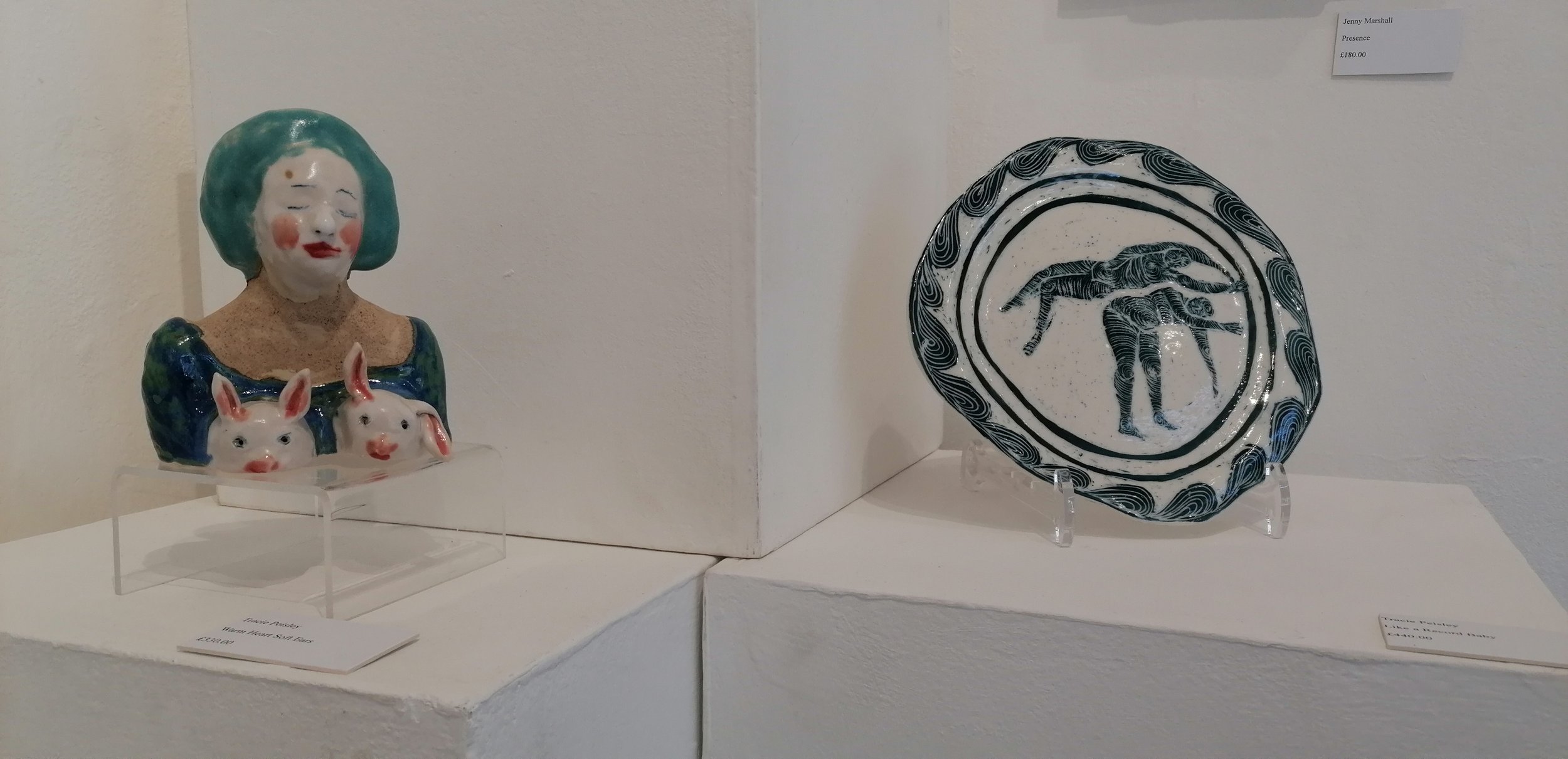
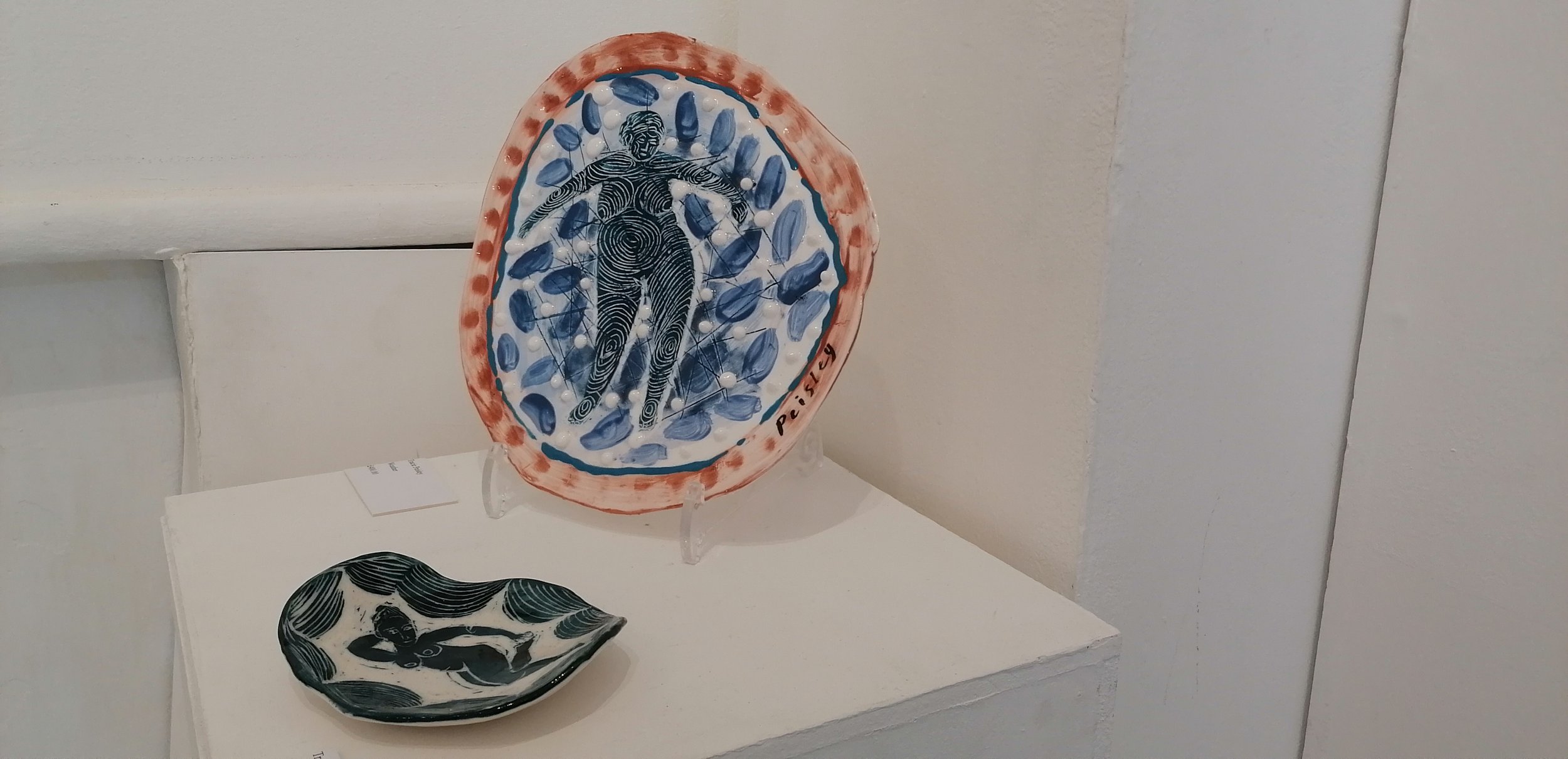
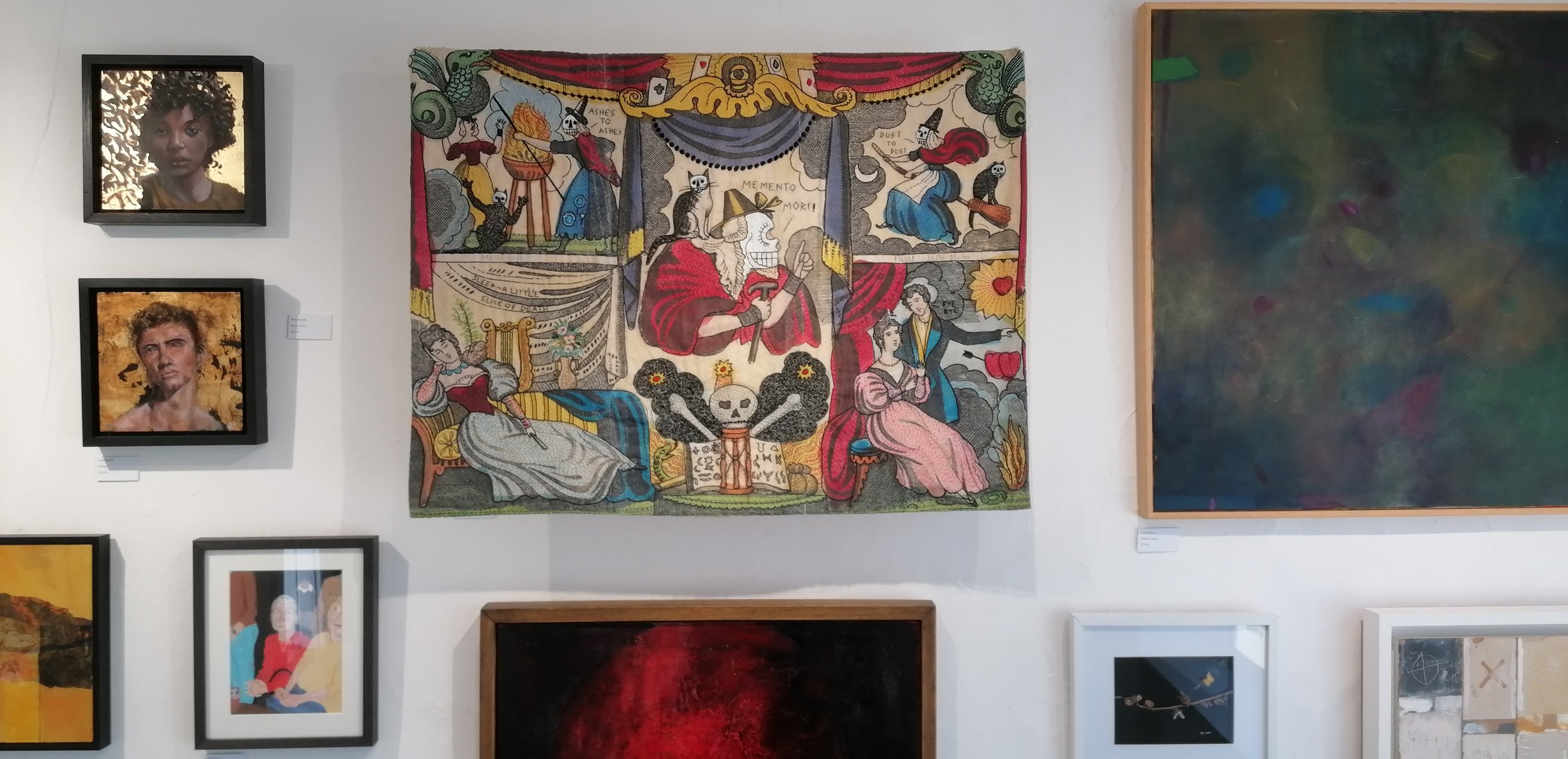
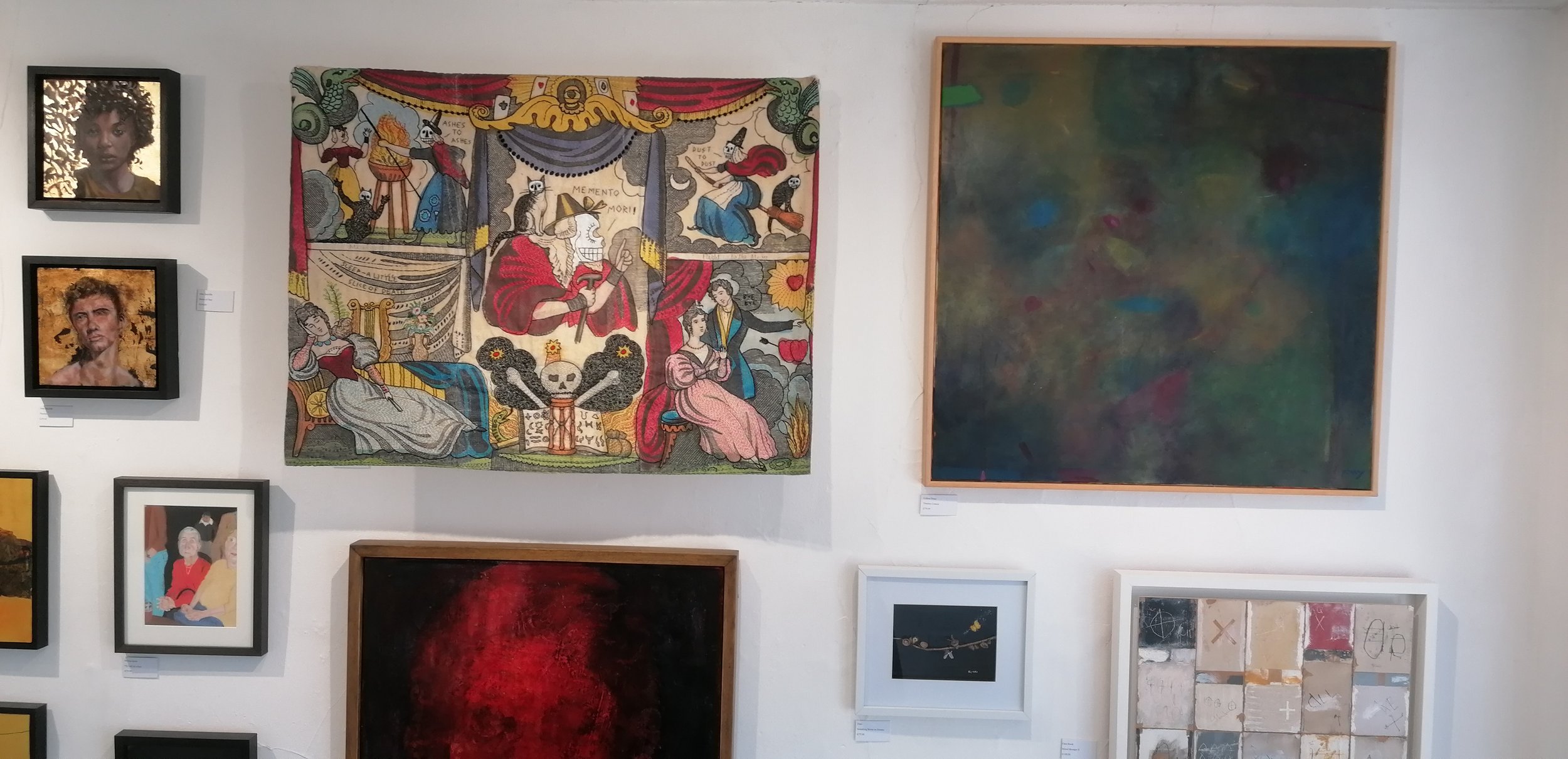
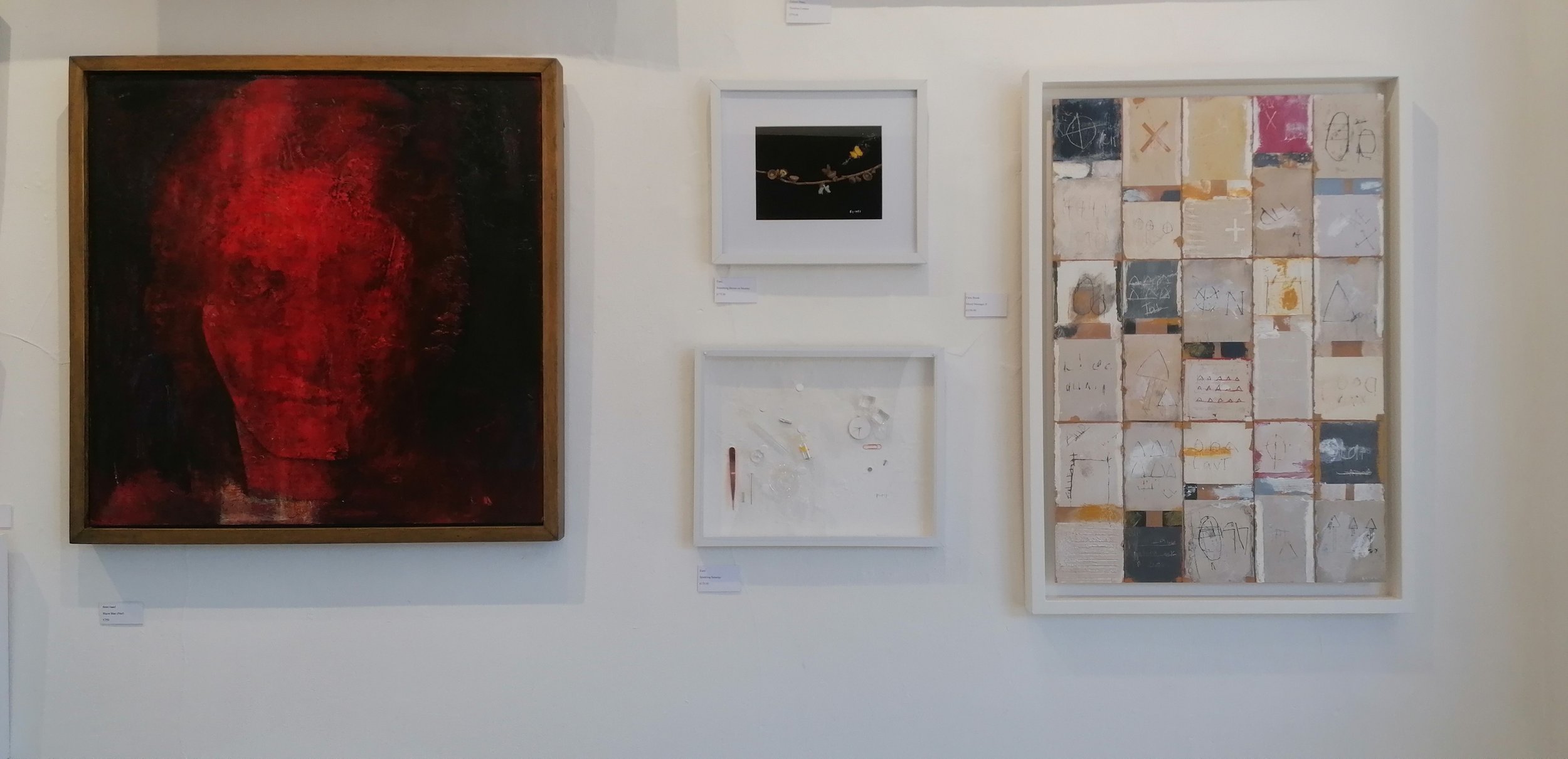
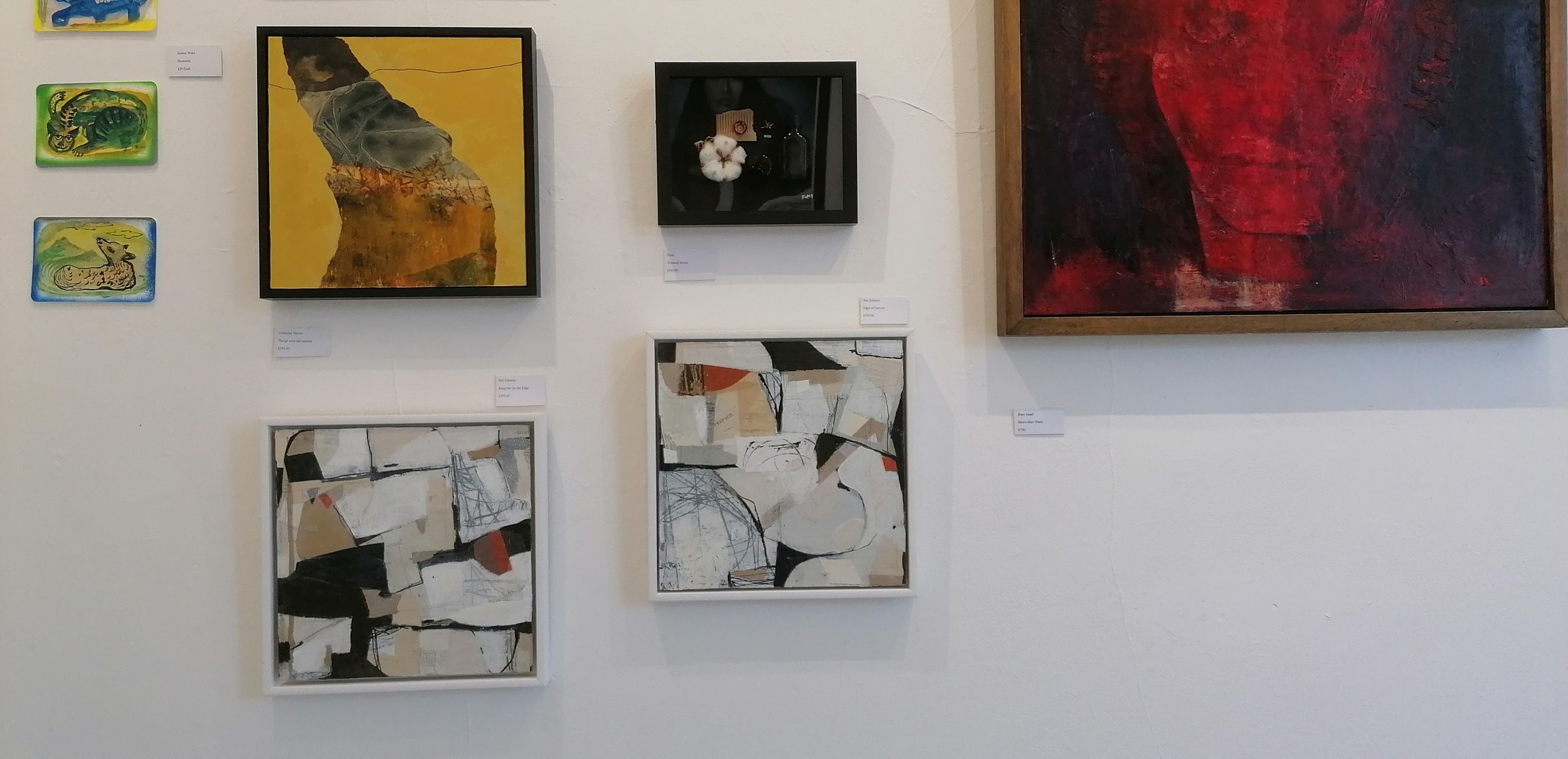
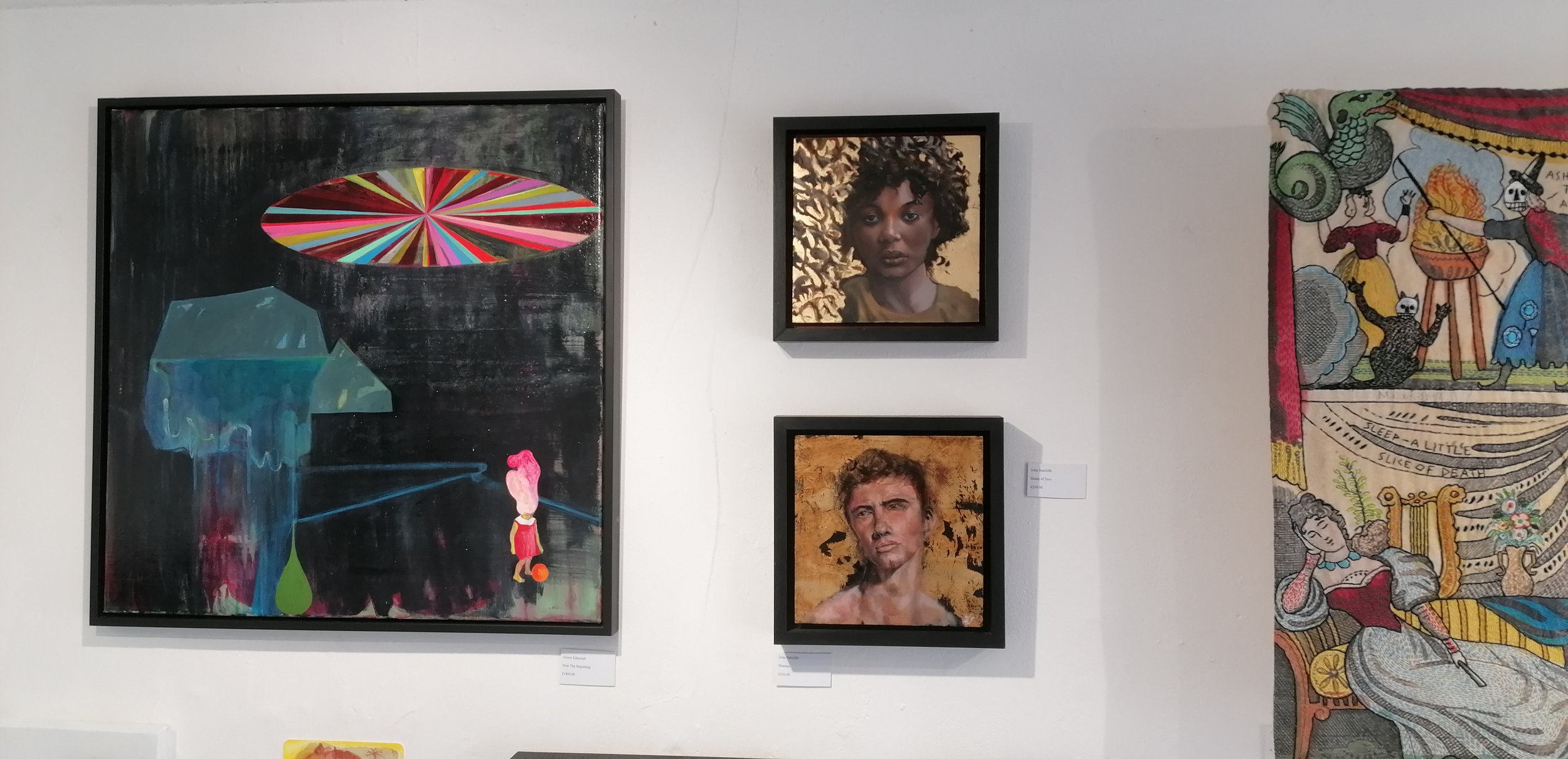
Delphic
3 June - 8 July
Opening: Friday 2 June 7:30-9:30pm - hospitality provided. All welcome.
ˈdɛlfɪk
adjective: relating to the ancient Greek oracle at Delphi; deliberately obscure or ambiguous.
Cupola has created a selected exhibition of work across media from an Open Call for submissions of interesting and innovative responses to the title of the show.
Ancient and modern coalesce and coexist in the latest exhibition at Cupola Gallery. From Greek Goddesses to contemporary abstract painting, you are encouraged to embark on an odyssey of discovery.
A short video showing the work in both the Long Gallery (first floor) and the Main gallery (ground floor).
40 artists have been selected to exhibit their work at Cupola Gallery from as far afield as Norway, Australia and the USA alongside those from across the UK and artists based in Sheffield.
Painting, ceramics, sculpture, textiles, photography and printmaking are represented.
Artists such as Pauline Rignall and Bruce Rimell respond to the spiritual aspect of the title Delphic. At Delphi the pythoness chanted oracles. The oracle would encounter a serpent in his or her dreams, and from its mouth hear a prophecy, or be taken into another world. Bruce’s painting recalls a visionary moment from an ‘ayahuasca’ moment from many years ago. Pauline paints female figures using expressive, energetic marks in pale pinks, warm oranges and powder blues with flashes of brighter, bolder colour. The gentle and seductive colour palettes are in contrast to the power of her Goddesses / oracles. There are ambiguous lines and marks hinting at snakes or crowns or wings and a horned figure indicative of something darker, but the titles only reveal so much and the viewer is left to interpret her works much like those who visited the Oracle at Delphi were left to interpret the words from the Oracle.
Painter and printmaker Lyn Hodnett and artist Tracie Peisley have used animal elements to hint at meaning, pulling on myth and story, both personal and universal. Tracie’s ceramic sculpture of a woman with bunny rabbits for breasts is particularly intriguing. In addition Justine Wake’s mythic looking animal postcards seem to reference similar ideas. Anne Menary combines, textiles, collage from books and found objects to reimagine and re-contextualise stories and personal journeys. Textile artist Mary Mazziotti’s contemporary textile hangings evoke a medieval sensibility, whereas Mary Barratt weaves her own stories with her unique use of marks, colours, textures and personal and religious symbols in her paintings. Marjan Dijkstra combines elements of Celtic and Greek myth with contemporary environmental issues in her unique printmaking works.
Abstract painters, each with their own unique style and language include Sue Johnson, Jacqui Gallon, Catherine Morris, Helen Jones, Chris Brook, Lois Palframan, Alison Edmonds, Jonathan Oakes, Martin Pearson, Colleen Penny, Jo Brown, Paul Evans.
Figures and faces, indistinct, highly stylised or ‘altered’ appear in the works of Robert Broadhurst, Caroline Greyling, Tracey Keeping and Bren Head. Figures in historical, imagined or a contemporary context which excite interpretation are provided in paintings by Andrew Sales, Viv Owen, Simon Dobbs, John Sutcliffe, Octavia Inns and Melissa Speed. Claire Allam uses smoke and fire to create a ceramic ‘Goddess’.
The landscape is the inspiration behind the sculpture of Jenny Marshall, as well as the photography of Brian Adams and Toby Parker Rees. Abstracted landscape paintings by John Sutcliffe and Semi abstract works by Fiona Kemp and Emma Price. Nature is also the inspiration behind the unfeasibly delicate and intricate wall sculptures by Fumi who builds tiny insects from leaves and petals in miniature constructed environments. Fumi’s attention to detail is mirrored in the delicate ‘merged’ graphite drawings of specific locations in London by Su Bonfanti.
There are stories to be found in the seemingly random choice of items in the still life painting by John Brokenshire.
Finally, Klaus Pinter has delivered his eccentric conceptual paper creations to add to the diverse collection of work in this exhibition.

